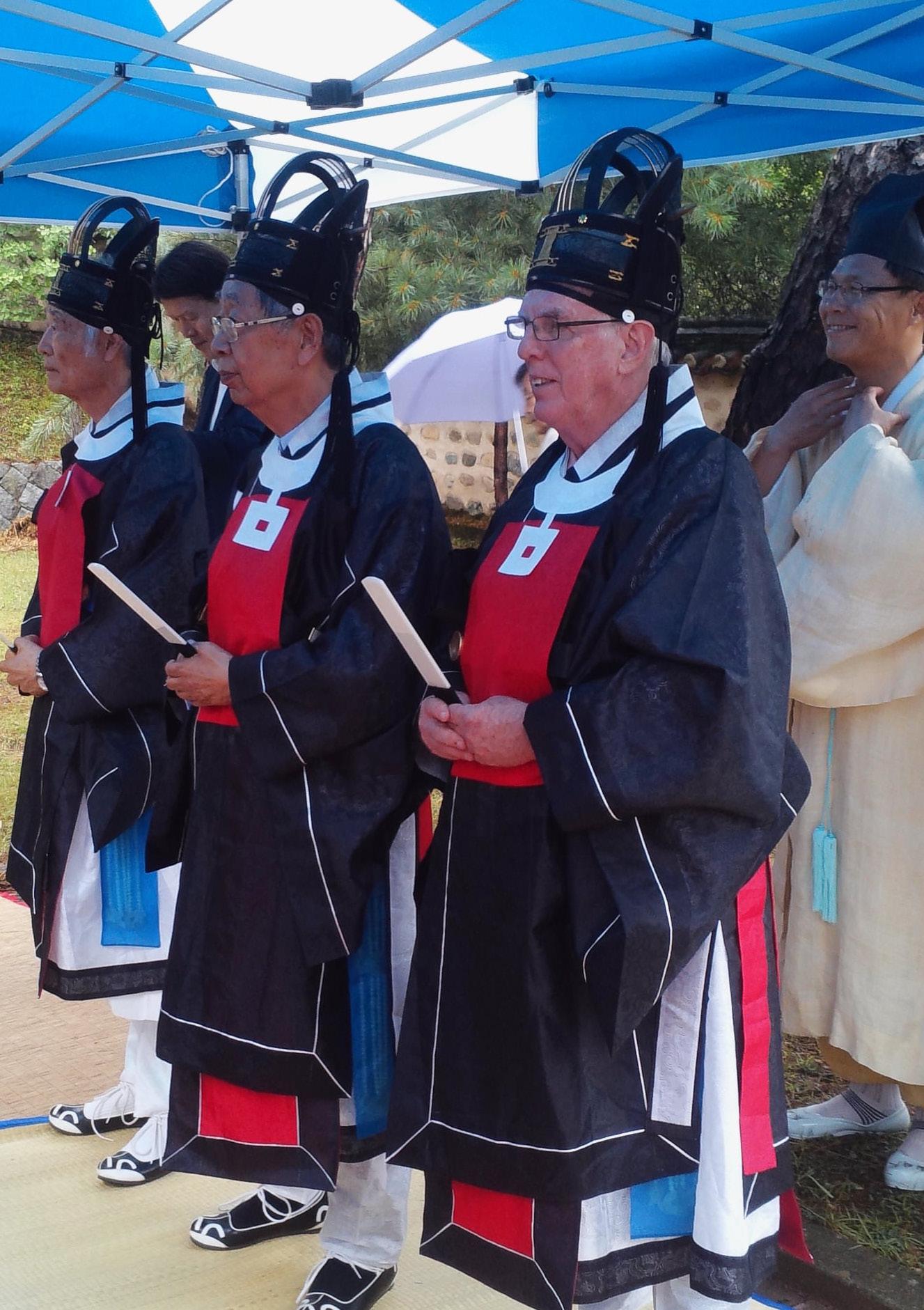
and Resistance Priests and May 18

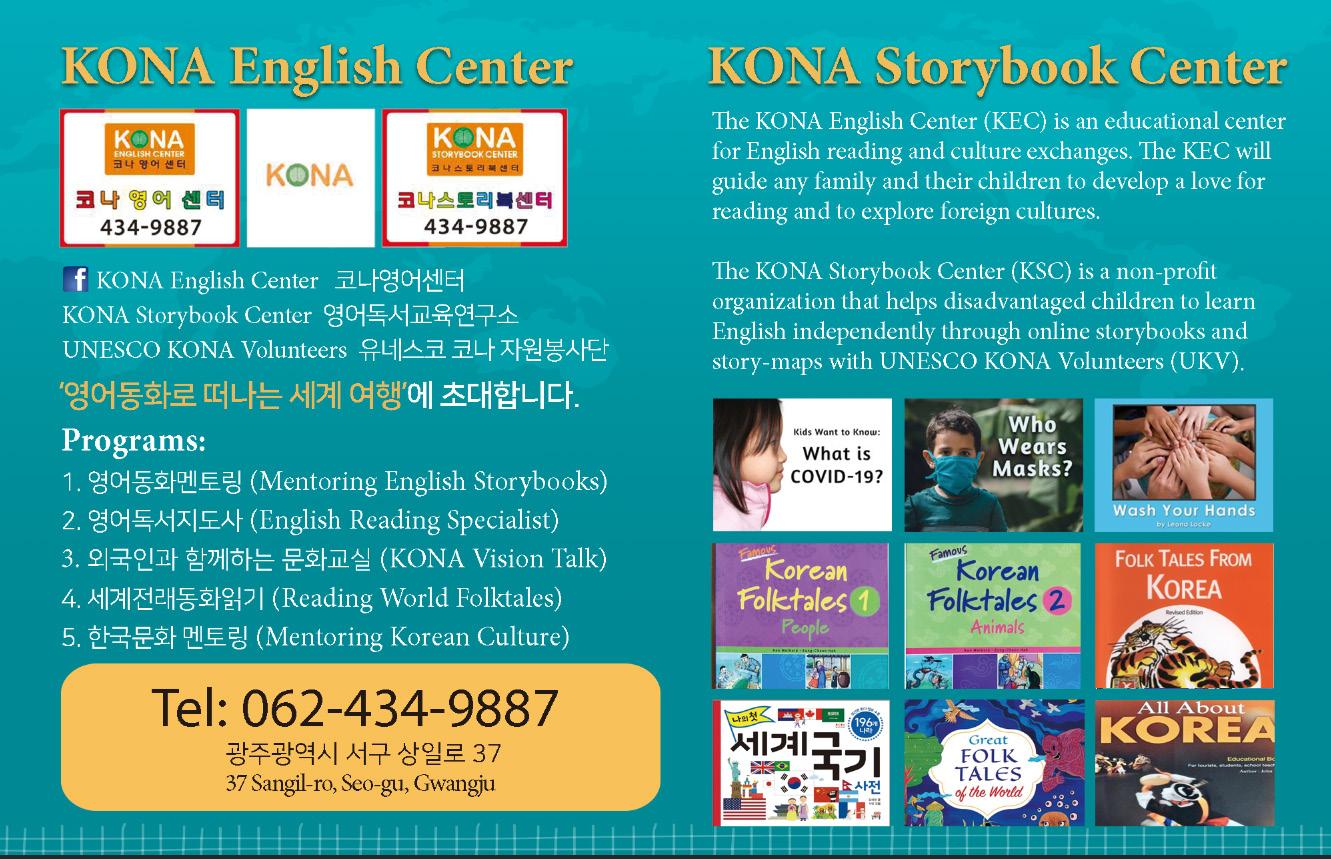
Gwangju & South Jeolla International Magazine


and Resistance Priests and May 18


Gwangju & South Jeolla International Magazine

November 2025, Issue 285
Published: November 1, 2025
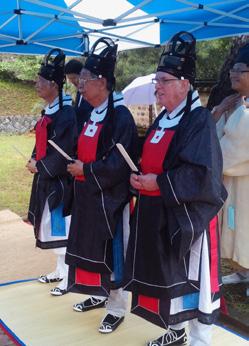
Cover Photo
Dr. Baker (right) participating in a Confucian ritual in Andong.
Courtesy of Dr. Don Baker.
Publisher Dr. Shin Gyonggu
Editor-in-Chief Dr. David E. Shaffer
Copy Editing Dr. David E. Shaffer, Timm Berg
Layout Editor Johanna Lezada
Online Editor Johanna Lezada
The Gwangju News is the first English monthly magazine for the general public in Korea, first published in 2001. Each monthly issue covers local and regional issues, with a focus on the roles and activities of the international residents and local English-speaking communities.
Copyright ©2025 by the Gwangju International Center. All rights reserved. No part of this publication covered by this copyright may be reproduced in any form or by any means –graphic, electronic, mechanical, photocopying, recording, or otherwise – without the written consent of the publisher.
The Gwangju News is published by the Gwangju International Center: Jungang-ro 196-beon-gil 5 (Geumnam-ro 3-ga), Dong-gu, Gwangju 61475, South Korea
Tel: (+82)-62-226-2733
Fax: (+82)-62-226-2731
Website: www.gwangjunewsgic.com
Email: gwangjunews@gic.or.kr
Registration No 광주광역시 라 00145
ISSN 2093-5315
Registration Date: February 22, 2010
For volunteering and article submission inquiries, please contact the editor at gwangjunews@gic.or.kr

Temperatures are dropping, leaves are falling, the vivid garb of summer is giving way to jackets of more earthy tones, but the forest foliage is still parading its varied autumnal colors. The rice paddies are now bare, their golden grains harvested, and the markets are offering kimchi cabbage in large sacks. This scenario can be announcing the beginning of no month other than that of November, and the onset of the eleventh month heralds the publication of the November issue of the Gwangju News!
This month’s cover feature takes us back to the May 18 (1980) Uprising and the role of Catholic priests in it. Also of a historical note are tales of old Mokpo and remembrance of the end of World War I.
Our Travel and Discovery section takes us on an autumn journey through Mudeung Mountain. It also takes us on a trip to Beopseongpo, where Buddhism set ashore in Korea during the Baekje Kingdom period almost two millennia ago. And you will want to find out about the volunteer expedition to Bogil Island off Jeolla-do’s southern coast.
In our Community section, a former Gwangju resident tells us what he misses most about living in the City of Light. A current Gwangju resident reveals the loneliness that an expat can experience on Korea’s joyful holidays. A former resident of Vietnam reports on the city-toprovince tie between Gwangju and Nghe An. And a long-time Gwangju News editor interviews a long-time Gwangju News book reviewer.
We have three articles for you in our Teaching and Learning section this issue. The first introduces Gwangju’s unique approach to the Neulbom after-school program. The second is a Ukrainian’s perspective on Korean classrooms. And our third describes how Australian higher education differs from what she experienced in Gwangju.
Mental health is the largely unspoken health condition. A mental health expert gives it voice in our Health and Well-Being section.
Are you aware of Gwangju’s National Science Museum, Lucerium? Visit it in Buk-gu along with the article’s author. How do solar panels work? Can perovskite make them pliable? Find out from our solar energy researcher/expert/writer. Both articles appear in our Science and Technology section. And this month’s book review is a best-selling World War I historical fiction.
D’s Café Column takes us to the Sajik Tower. Our other café review takes us outside the city to Café The Haru. And our restaurant review is of the Buyeong Meat Restaurant. Don’t miss our Gwangju City News, our November Upcoming Events, this month’s Area Sports Round-Up, and the futures of Kia Tigers’ foreign players. All in one issue. Enjoy!
David E. Shaffer
Editor-in-Chief Gwangju News


Perched at 600 meters above sea level on the gentle shoulder of Cheon-gwan Mountain, Cheongwan Temple floats between the clouds and the cliffs of Jangheung County. Founded during the Silla Dynasty, this mountain temple was named after Cheon-gwan Bosal, the Bodhisattva said to bestow blessings and wisdom.
Today, the tranquility of Cheon-gwan Temple also breathes with life. In spring, the Wild Herb Festival celebrates the valley filled with fresh mountain greens; in autumn, melodies of the Mountain Temple Music Concert echo through the forest. And year-round, templestays are available for the experiencing of transformative tranquility.
Photograph courtesy of the Venerable Yeondeung, head monk at Cheon-gwan Temple.

32 Neulbom: “Forever Spring” for Schoolchildren – Gwangju’s Approach to an After-School Program
34 Ukrainian Voices, Korean Classrooms: A Tale of Sharing and Learning
35 From Gwangju to Wollongong: Academic Journey of a CNU Alumna HEALTH & WELL-BEING
37 The Forgotten Side of Expat Life in Korea: Mental Health Challenges SCIENCE & TECHNOLOGY
40 Lucerium: The Gwangju National Science Museum
42 A New Dawn in Solar Energy: The Promise of Perovskite
CULTURE AND THE ARTS
45 Book Review: All Quiet on the Western Front FOOD & BEVERAGE
47 D’s Café Column: Sunset, Coffee, and City Lights – My Sajik Tower Escape
49 Café The Haru: Where Art, Light, and Nature Meet
51 Restaurant Review: Buyeong Meat Restaurant SPORTS & ENTERTAINMENT
52 Sports Focus: Kia Tigers’ Foreign Players Face Uncertain Futures
54 Area Sports Round-Up
56 November Upcoming Events
Photo credit: Dr. Don Baker

Gwangju has secured a foothold for local artificial intelligence companies seeking to expand into China. Mayor Kang Gi-jung signed an MOU with Pudong Software Park Venture Investment Management Co. and Lingyang Smart Technology in Shanghai’s Pudong Software Park. The agreement aims to build an AI industry ecosystem and a global cooperation network through collaboration in innovation, technology, and talent development.
Under the MOU, the parties will cooperate in sharing innovation resources, supporting overseas expansion, conducting AI research and testing, and fostering talent exchange programs. This partnership is expected to strengthen global competitiveness and open new opportunities for Gwangju-based AI companies in the Chinese market.
Chonnam National University and the Chosun University affiliated Chosun Nursing College
have been officially selected for the Ministry of Education’s Glocal University Project. The project aims to foster global-level regional universities that drive local growth through industry–academia collaboration and talent retention.
Over the next five years, Gwangju City will invest a total of 470 billion won – including 250 billion won in national funds and 220 billion won in city funds – to support education, R&D, youth employment, and graduate AI programs.
Chonnam National University will focus on AI research and innovation, while the Chosun Nursing College will develop a Well-Aging Valley linked to Gwangju’s four special zones. Mayor Kang Gi-jung said the selection is “a major opportunity for Gwangju’s youth and industries,” pledging strong support to create a city where young people choose to stay and grow.
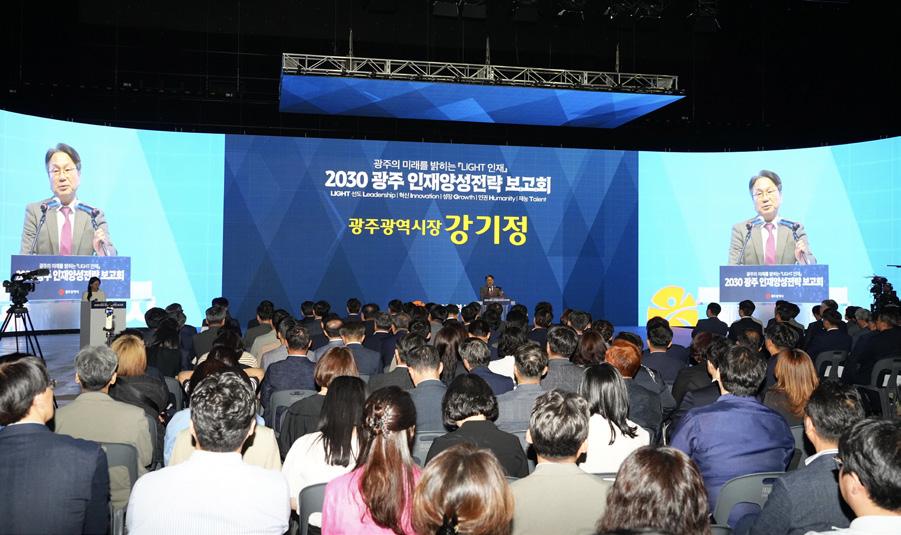
Gwangju City held a completion ceremony for the 2025 Medical Interpretation Training Program, producing 16 new interpreters covering 10 language groups. This year’s languages include Vietnamese, Chinese, Russian, Taiwanese, Mongolian, and Khmer, with Belarusian, Malay, Uzbek, and newly added Ukrainian.
The program aims to help foreign residents overcome language barriers in healthcare. Interpreters assist patients throughout the entire medical process – from registration and consultation to testing and payment. The trainees completed 60 hours of training, including medical terminology, basic medicine, emergency response, simulations, and a written exam, to ensure professional and practical competence.
Medical interpretation services are available to all foreign residents in Gwangju through the Gwangju Migrant Health Center (062-956-3353).

Gwangju City officially opened the Seochang Scenic Observatory on October 1 along the Yeongsan River near the Seochang fields in the district of Seo-gu. The observatory, the first achievement of the Yeongsan River 100-ri Trail Y Project, was completed over three years with a total budget of 2.5 billion won.
The observatory offers sunset views over the river and expansive reed fields, while commemorating the historic Seochang port and providing ecological and cultural experiences.
City officials expect the observatory to become a popular destination for citizens and tourists, boosting the local economy and enhancing Gwangju’s urban brand.
Gwangju City announced that the ultralarge complex mall “The Hyundai Gwangju” is proceeding normally, independent of the nearby residential-commercial development project. Despite concerns after some developers abandoned their projects on the former Jeonbang–Ilshin Textile site, the city clarified that the mall is being independently managed by the Hyundai Department Store Group.
The mall will span 272,955 square meters of total floor space, with 108,900 square meters of retail space, six underground floors and eight aboveground floors, and 2,652 parking spaces. It will be Gwangju’s first large-scale private multi-use cultural and commercial facility, and is expected to boost local commerce and urban activity. City officials accelerated administrative procedures, completing what is normally a 19-month processes in 11 months, and emphasized that the mall will become a downtown landmark for citizens and tourists.
Compiled by Charlene Lee.

Charlene Lee is the founder of Charlene English Institute. Having lived in many different countries, she loves to explore and experience diverse cultures. She hopes to contribute to making Gwangju a more vibrant city.

By Dr. Don Baker
This past September, the May 18 Foundation organized a conference to which Dr. Donald Baker was invited to speak. Dr. Baker is a Korean studies scholar, and the May 18 Gwangju Uprising is one of his research areas of interest. The article that follows borrows in part from the talk that Dr. Baker gave at the May 18 Foundation’s event. — Editor
Fifty-four years ago, in 1971, I arrived in Gwangju, the first city I lived in in Korea. The United States Peace Corps had dispatched me to Gwangju to teach English. The city I found myself in back then was very different from the Gwangju we see today. There was no subway. I took a crowded city bus to my classes at Dongshin Middle School. There was not much in the way of Western food. If I got tired of Korean food (though I learned quickly that the food in Gwangju is delicious!), the main options were jajangmyeon, sashimi, and “hamburg steak.” And there were no high-rise apartment buildings. I lived in a small room in a Korean-style boarding house. There was no bathtub or shower in that
house. Instead, every morning I walked down the street to a public bath house to bathe and shave.
Not only does Gwangju look very different now than it did half a century ago, it also has a different image. Back then it was a sleepy provincial capital. Peace Corps staff members in Seoul apologized for sending me to the undeveloped countryside, which is how people in Seoul thought of Gwangju back then. Today, Gwangju is a modern city respected for the role it played in accelerating Korea’s progress from dictatorship to democracy.
As I am sure you all know, Gwangju’s image changed because of the May 1980 Gwangju

Democratization Movement. Gwangju was the only city in Korea that had demonstrations protesting Chun Doo-hwan’s seizure of political power on May 17, 1980. It paid a heavy price for those demonstrations but, once the rest of the country learned of the atrocities inflicted on Gwangju between May 18 and May 27 (it took a few years for the news to spread because of strict censorship), people began to rise up and demand an end to military rule. In 1987, Chun was forced to step away from the Blue House and allow freely contested elections for the presidency. The courage people in Gwangju displayed in 1980 inspired people in Seoul and other cities in 1987 to demand an end to the dictatorship under which they had lived for far too long.
In May 1980, I was in Seoul, engaged in research for my doctoral dissertation on Joseon Dynasty history. However, when I learned via short-wave radio (we did not have the internet then, and local media was censored) what was happening in Gwangju, I hurried down south, sneaking around the military cordon to get into the city. I wanted to see if my friends here were still alive. They were, but when I saw what had happened to other people in Gwangju, I was shocked. My memories of what I saw then have haunted me for the rest of my life.
“Today, Gwangju is a modern city respected for the role it played in accelerating Korea’s progress from dictatorship to democracy.”
As someone who studies Korean history, I am supposed to adopt an objective, non-emotional tone when I write about events of the past. It has been difficult for me to keep my emotions in check when I talk or write about May 18. I remember the ajumma who grabbed my arm when I was leaving Gwangju late that May and
begged me to tell the world what had happened to them. However, until recently, it has been difficult for me to do so while maintaining the professorial objectivity my academic position required me to have.
Finally, after almost half a century, I am now able to keep my emotions under control and look back on that important historical event and try to figure out exactly what happened and why it happened the way it did.
It is the job of historians to find answers to questions about the past. There are still many unanswered questions about May 18. For example, we still don’t know who gave the order for the special forces troops to shoot into unarmed crowds. However, the question that I have been focused on recently concerns what I first (mistakenly) thought was religious bias in who was arrested. When I discovered that the only clerics arrested in Gwangju in the immediate aftermath of May 18 were Catholic priests, I was puzzled.
In 1980, there were only about 22,000 people in Gwangju who were baptized Roman Catholics, less than three percent of the population then. Moreover, there were only 14 parish churches for them to attend, and only nine of the priests at those churches were Korean. There were many more Protestant churches in the city. There were also a few Buddhist temples in the city and many more in the surrounding area. But no Gwangju pastors or Gwangju monks were arrested in late May or early June of 1980. How can we explain why only Catholic priests were arrested?
When I dug into the records, I discovered that there were several activist Protestant pastors in Gwangju in 1980. However, they had been harassed by Park Chung Hee’s dictatorial regime and therefore went into hiding on May 17 so that they wouldn’t be arrested again. As for monks, the major temples were outside the city, so most of the monks were not in Gwangju when Chun’s special forces began attacking the city on May

18. That left Catholic priests as the only religious leaders who could help the people of Gwangju cope with the disaster that was unfolding around them.
Their first attempt to step up came on May 21. Thousands of Gwangju citizens had gathered around the rotary in front of what was then the Provincial Office building and was then serving as the headquarters of Chun’s troops. That crowd began calling peacefully but loudly for the troops to leave the city. Fearing the violence might break out, eight of Gwangju’s priests began discussing putting on clerical garb and going downtown to stand between the soldiers and the people in an effort to prevent further violence. Before they could do that, however, at 1 p.m., soldiers started firing into that crowd. Dozens were killed.
That massacre so angered the young men of Gwangju that they broke into reserve army arsenals, grabbed rifles, formed a citizens’ militia, and started shooting at those soldiers. That was the first time people in Gwangju had returned fire, though at that point they had been beaten, stabbed, and shot at for three days. Soon Chun’s soldiers retreated from the center of the city and Gwangju was free. However, it was clear the
soldiers would return before too long, which could lead to even worse bloodshed.
Concerned about what the future might hold, leading citizens formed what they called a settlement committee to mediate between the angry citizens of Gwangju and Chun’s armed forces. They asked Archbishop Youn Kong-hi to serve on that committee. Bishop Youn said he was too busy and suggested instead that Fr. Jo Pio (Cheolhyeon) act as the Catholic representative on that committee.
When the first settlement committee angered Gwangju citizens by calling for the people to surrender unconditionally, a group of more progressive prominent Gwangju citizens met at Namdong Catholic Church to see if they could come up with a better solution. A prominent member of this group, popularly known as the Namdong Church group, was Fr. Kim Seongyong, the pastor of Namdong Catholic Church.
Fr. Kim was worried not only about the upcoming return of Chun’s forces to the streets of Gwangju but also about the danger posed by thousands of weapons in the hands of young men inside Gwangju. That led him to lead a drive to collect
weapons from the citizens’ militia. His plan was to have the local police watch over those weapons while he used them as a negotiating tool with the military. He and the other members of that second settlement committee hoped to get the military to promise to release the innocent people they had arrested, to apologize for the innocent people they had killed, and to guarantee that there would be no reprisals when they re-entered the city, in return for those weapons being turned over. Between May 22 and May 26, they were able to retrieve 4,500 of the 5,000 guns that had been in the hands of angry Gwangju citizens and keep them under guard in the now-liberated Provincial Office building.
“When I discovered that the only clerics arrested in Gwangju in the immediate aftermath of May 18 were Catholic priests, I was puzzled.”
On May 26, fearing that the standoff between the Gwangju people and Chun Doo-hwan’s troops was going to end soon with a full-scale attack, Fr. Kim and some other members of the more progressive settlement committee led what they called a death-defying march. Unarmed, they marched to the outskirts of the city, confronted the tanks and the soldiers they met there, and tried to convince them to refrain from trying to violently regain control over Gwangju. The army responded that they had until midnight to turn over all the weapons in the city or the army would attack.
Knowing his mission had failed, Fr. Kim escaped to Seoul, where he composed a report on what was happening in Gwangju. That report, called “More Out of Sorrow Than Anger,” was soon smuggled out of Korea to be translated and reprinted by Catholic organizations in Japan and beyond. It became one of the first eyewitness
accounts of the tragedy to reach people beyond the Korean peninsula.
While Fr. Kim was still in Seoul, the army launched its attack on Gwangju early in the morning of May 27 and soon the entire city had fallen under Chun’s control. Soon after that eight of Gwangju’s nine Koreans priests were arrested. Most of them were released after only a month in jail. However, Fr. Jo was given a sentence of three years, though he was released after only five and a half months. Fr. Kim was given a sentence of 15 years, of which he served only 14 months. It didn’t stop there. On June 25, government agents attacked Fr. Bak Changsin in Jeonbuk Province and left him with serious wounds requiring hospitalization because he had spoken in a sermon about what happened in Gwangju. Then, in July, five priests and a nun were arrested in Seoul for sending information about Gwangju out of the country. That nun, Jeong Marianna, underwent such intense interrogation that she was left paralyzed for the rest of her life.
The Chun regime clearly feared the ability of Catholic priests and nuns to utilize the Catholic international network to let people outside Gwangju, and even outside Korea, know of the atrocities he had committed here. That is why those Catholic priests in Gwangju were arrested. Of course, Catholics were not the only ones fighting against injustice and for truth. We can’t ignore the contributions of Protestants, Buddhists, and the non-religious to the democratization of the southern part of the Korean peninsula. However, we should not forget the important role played by the Catholic community in letting outsiders know what happened in this city 45 years ago, thereby accelerating Korea’s progress toward democratization.

The Author Don Baker, taught English in Gwangju as a U.S. Peace Corps volunteer from 1971 to 1974. He later earned a PhD in Korean history from the University of Washington and has been teaching Korean history and culture at the University of British Columbia since 1987.
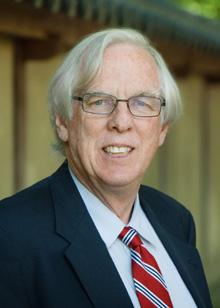
By Park Nahm-Sheik
Mokpo, located in the peninsula’s southwest corner, is a city with plenty of interesting sights to see and plenty of interesting things to do. Mokpo is famous as the host of Mt. Yudal, so much so that the two are synonymous for all intents and purposes. Just as iconic as the city is Samhak-do, the island trio comprising the so-called “three-crane island cluster.” Folklore has it that the island group was where a young martial artist supposedly held his daily workout sessions in the clean air of the wee hours of the morning.
Three beautiful maidens came to watch this young man at his workout. He did not particularly appreciate them being at such close range. They so distracted him that he eventually came to beg them to please leave him alone. For all his earnest entreaty, however, they showed no signs of budging. This war of nerves went on and on until he eventually went so far as to threaten to forcibly expel them if need be. Even this ultimatum did not seem to work.
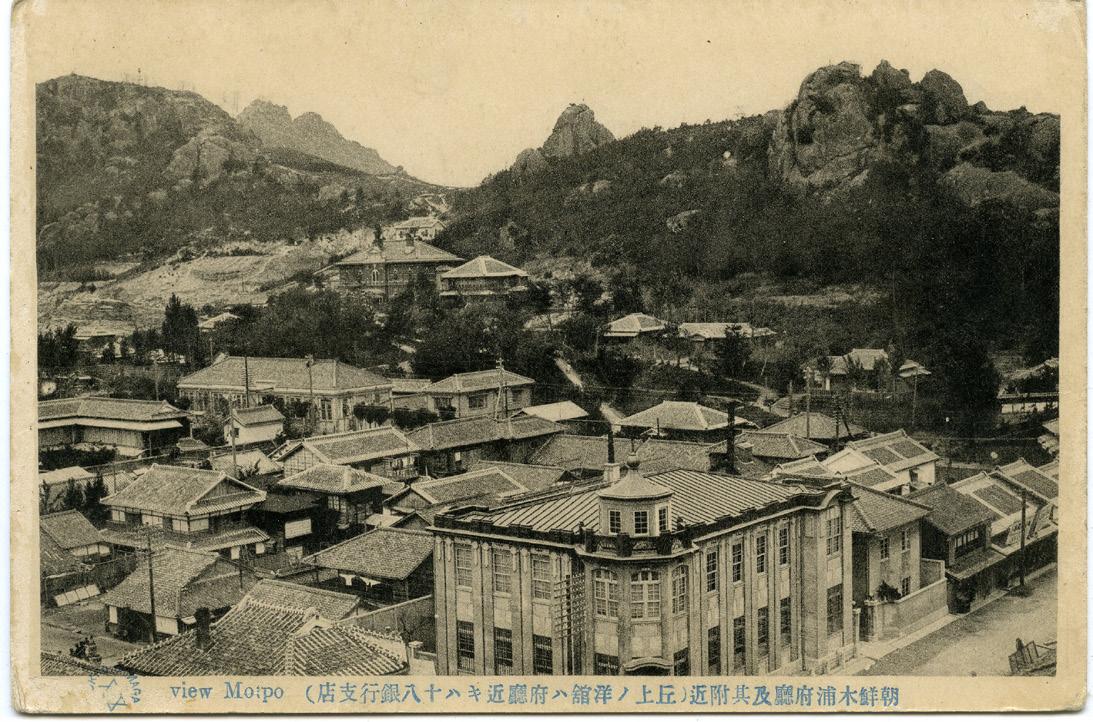

Under these circumstances, the young martial artist could no longer keep his temper in check. Losing self-control momentarily, he pulled his bow string, thereby sending the three beauties to their instant deaths. Upon passing from this world to the next, they miraculously morphed into three magnificent cranes. Folklore has it that the three islands of Samhak-do are “reincarnations” of the three departed souls. Just a bunch of myth as it may be, it still is quite intriguing. It keeps tugging at our heartstrings, does it not?
So much for the mythical portion of the story here. How about some real-life figures brightening up the firmament of Mokpo? Definitely topping the list here is the late President Kim Daejung. He was born and raised on the nearby island of Haui-do (하의도) in the all-island county of Sinhan (신안). He used to call Mokpo home, though. Suffice it to say that Mokpo was always near and dear to his heart. Besides, he got a diploma from Mokpo Business School.
Be that as it may, Kim is best remembered to this day as the first Nobel laureate from Korea. His is a distinct honor to Mokpo as well as to the rest of Korea. First and foremost, however, he is revered as the favorite son of Mokpo, if not of the entire country. I had the rare privilege of meeting Kim in person back in the mid-1960s while I was studying at the University of Hawaii.

As luck would have it, I was on a gig assignment as a guide for Korean dignitaries visiting Hawaii. And I got to work as Kim’s guide for the duration of his stay in Honolulu. The two of us hit it off right away. I was immediately struck by his personable manners; he also developed an apparent liking for me from the get-go. I was particularly enraptured by his vibrant personality. His forward-looking Weltanschauung was truly one of a kind.
Hawaii was on the first leg of Kim’s visit to the United States as a freshman member of the Korean National Assembly. Friends are thieves of time, indeed. Our time together ran out
lightning fast. When he bid farewell, he promised to keep in touch with me. True to his word, he always remembered to send me greetings around yuletide. Let me touch on one eerie episode here, though. In the family photo he habitually enclosed with his wishes for a Merry Christmas and a Happy New Year, the whole family had their eyes gouged out.
“Definitely topping the list here is the late President Kim Daejung.”
The grotesqueness of it all got burnt into the innermost crooks of my mind. Bone-numbing goose bumps that followed in its footsteps just wouldn’t go away for a long while. There was no way of knowing who was to blame for this sickly villainy. However, my wild guess is that some rogue underlings of the then powers-that-be may have been behind it all. After all, numerous attempts had been made on Kim Daejung’s life. Anyway, the whole story was so weird and so surreal and so darn out-of-this-world. It has left open wounds in the deepest pits of my soul that still keep bleeding with no evident signs of letting up.


Author
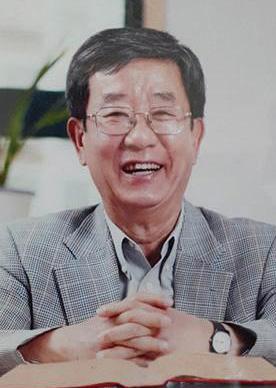
Park Nahm-Sheik is a native of Gwangju. After graduating from Chonnam National University, he went on to receive a master’s degree at the University of Hawaii and a PhD (applied linguistics) at Georgetown University, both in the U.S. Upon completing an illustrious career at Seoul National University, Prof. Park served as president of the International Graduate School of English.
By Michael Attard
As a Canadian, I learned early in life about how Remembrance Day marks the end of World War One. It was on the 11th hour of the 11th day of the 11th month, in 1918, that World War One came to an end. Canadians served during the war, and probably the most famous Canadian from that time is John McCrae. McCrae was a doctor and a poet. Ironically, as the artillery shells churned up the soil, they encouraged the proliferation and growth of the dormant poppy seeds. This led McCrae to write the poem “In Flanders Fields.” The poem is told from the perspective of a fallen soldier. Subsequently, since 1921 it has become a tradition in British Commonwealth nations to wear a poppy on November 11.
I have wondered about how World War One affected and is understood in Asia, particularly Korea. So, I did some research and was surprised to learn that the First World War did have an effect upon Korea. Since 1910, Korea had been annexed by Japan. Thus, Korea did not directly participate in the war, but the results of Japanese involvement would have implications for Korea.
Japan, at that time, was allied with Britain, France, Russia, and others against Germany. During the war, Japan was able to seize German possessions in China and the Pacific. Japan’s strengthened international standing enabled it to subjugate Korea more easily. Europe paid little attention to Korea. Furthermore, the European colonial powers were weakened by the war, rendering them less influential in Asia.
The Koreans were well aware of how their position was actually worse after the Allied victory in Europe. There was some hope when

U.S. President Woodrow Wilson declared that all peoples should have the right of national selfdetermination. It could be argued that this gave some impetus to what became Korea’s March 1st Movement. This date marked a major turning point in modern Korean history.
In conclusion, World War One in Europe did not directly involve Korea, and strengthened Japan, which ultimately delayed Korean independence. On the other hand, Koreans were exposed to global ideas concerning self-determination, seeding Korea’s future independence struggles.



Michael Attard is a Canadian citizen but has lived in Gwangju for over twenty years. He has taught English as a second language in academies and within the public school system. He is officially retired and spends time reading, writing, hiking, and spending time with friends.
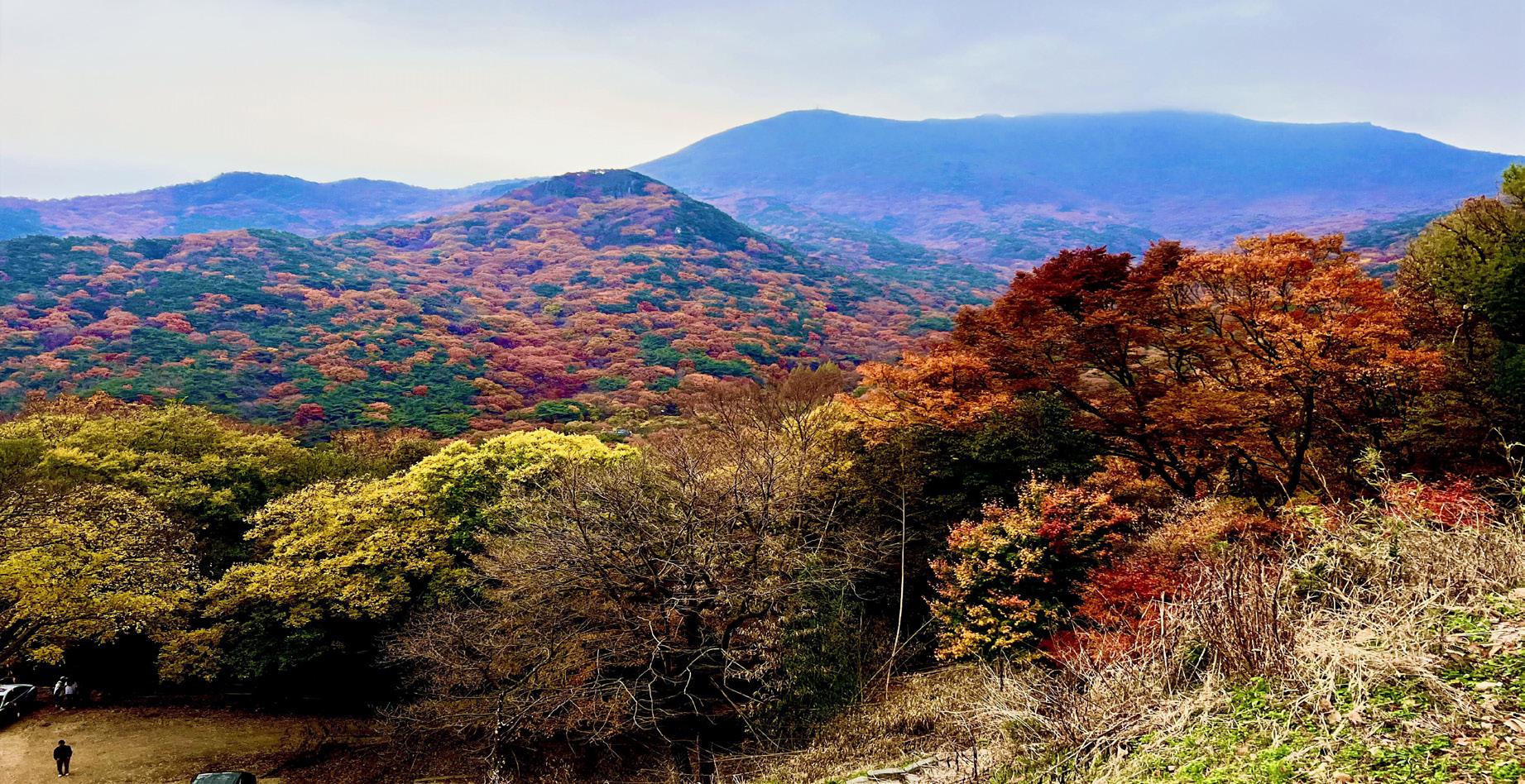
Before delving into the chilly winter season, South Korea passes through a vibrant autumn, a time when nature paints every corner of the country in shades of red, orange, and gold. This season feels romantic, exciting, peaceful, and colorful. The colored leaves around every corner make it feel like walking through a dream.
During this magical time, many famous mountains become popular for their stunning autumn foliage – Naejang Mountain, Jiri-san National Park, Mudeung-san National Park, and Jogye-san Provincial Park are among the most visited. I decided to visit Mudeung-san National Park to experience this beauty myself.
In Mudeung-san National Park, autumn typically starts from late October to mid-November, when
the foliage reaches its full splendor. I took a bus from Chonnam National University to the park, and even before arriving, the journey itself was mesmerizing. The road was beautifully lined with trees dressed in shades of yellow, red, and brown – it felt like traveling through a painting. The scenery outside the window was so stunning that it made me forget about the destination for a moment.
Once we got off the bus, we began walking toward the park entrance. The day I visited was cloudy and a little cold, creating the perfect mood for an autumn hike. The crisp air, combined with the earthy scent of fallen leaves, made the surroundings feel calm and refreshing.
My friends and I started walking toward the mountain area. Since there were many trails for

A quiet corner wrapped in fall colors.
hiking, we chose the shortest route. Each step along the trail revealed something new – the vibrant trees, the rustling leaves beneath our feet, and the soft mist that occasionally drifted through the forest. The colors of autumn were so captivating that we often stopped just to take pictures.
Every corner looked like a postcard scene, with maple leaves glowing against the gray sky. I took many photos, trying to capture every shade of autumn, though no picture could truly match the beauty we saw with our eyes.
As we continued walking, the trail gently wound upward. The peaceful silence of nature was occasionally broken by cheerful laughter and the clicking of cameras. The cloudy weather made the colors appear even deeper and richer, giving the forest a dreamy atmosphere.
At one point, we paused to rest and looked around – the entire valley was covered in fiery foliage, stretching endlessly across the mountain slopes. It was a breathtaking sight that made all the effort worthwhile.
Along the trail, we passed through several temples, nestled in the foothills of Mudeung Mountain. The temple grounds were graceful and peaceful, offering a gentle contrast to the rugged mountain scenery and vibrant autumn colors around. Sitting there for a moment, I felt a deep sense of calm and connection to nature. Later, we stopped by a small café near the park, where we enjoyed a cup of hot coffee while watching the clouds drift behind the mountains.
My trip to Mudeung-san National Park was more than just a hike – it was a peaceful escape into the heart of autumn. The mountain trails, the colorful leaves, and the soft weather all came together to create an unforgettable experience.
Autumn in South Korea truly feels magical –romantic, exciting, and calm at the same time. As I looked back at the fading colors of the season, I felt grateful for the beauty around me and promised myself to return next year to relive this dreamlike journey once again.


The Author

A native of India, Neha Bisht is pursuing her PhD research at Chonnam National University’s School of Materials Science and Engineering. She loves to meet new people and make new friends. Neha endeavors to contribute to the well-being of society in whatever way she can.
Photographs by Neha Bisht.
By Vibhanshu Maurya
It was one of those lazy Sunday mornings when the weather itself seemed to suggest a road trip. No plans, no checklist, just an open sky and an urge to ride. That’s how most of my trips begin. I prefer choosing destinations randomly; sometimes by how long I want to sit on a bus, or if I’m on my bike, by the direction that feels right – city, seaside, or countryside.
That day, after a week of rain, the bright sun felt like an invitation. I wanted to feel the sea breeze, the hum of the road, and the warmth of light on my face. While scrolling through the map, a name caught my attention: “Birthplace of Baekje Buddhism” (백제불교최초도래지) in Beopseongpo in Yeonggwang County. I had never heard of it before, but the name alone felt calming, historic, spiritual, and right by the ocean. Perfect!
So, I packed lightly, put on my helmet, and convinced a friend to hop on the back seat, without telling him where we were going. We started a little after 11 a.m., and by 12:30, we had reached our destination.
First Impressions – sea, silence, and sunlight. The place was serene; sunlit air mixed with salt and silence. The Birthplace of Baekje Buddhism, officially located at 203 Baekje-munhwaro, Beopseong-myeon, Yeonggwang-gun, Jeollanam-do, sits between a mountain slope and the coastline. To reach the top, we took a long glass elevator that rose slowly up the cliffside. From the top, the view opened wide, the sea stretched endlessly, a suspension bridge linked one mountain to another, and seagulls perched lazily on the steel wires, sunbathing as if posing for the horizon.
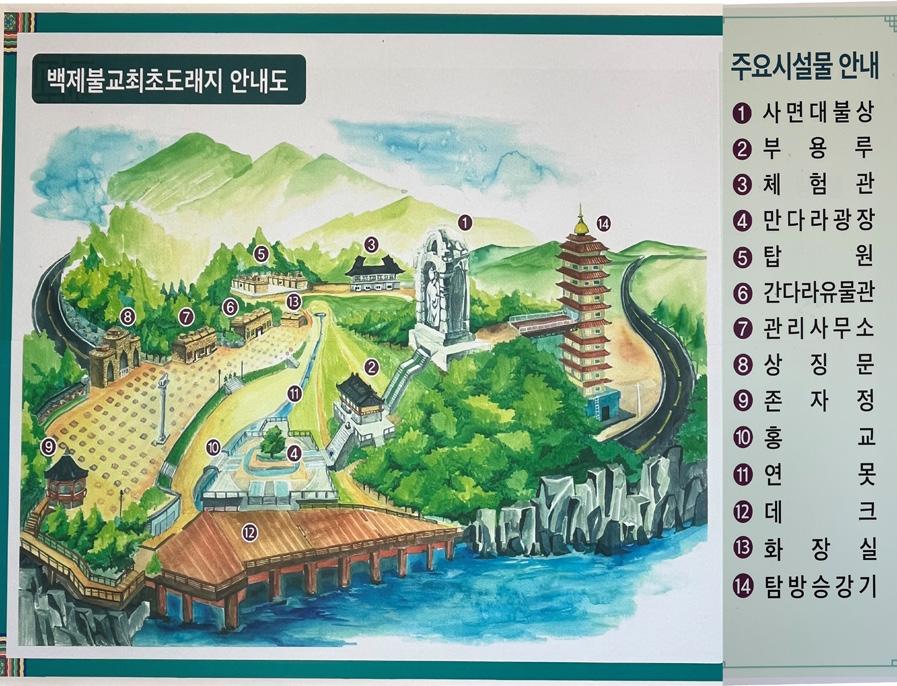
The first landmark that greeted us was a stunning statue: four Buddhas facing four directions. Their faces radiated calmness, their gestures gentleness. The sculptural style felt unmistakably Indian, especially one figure of Shakyamuni Buddha, reminiscent of Gandharan art. Seeing this blend of Indian and Korean expression was deeply moving.

The site sprawls across 45,000 square meters, with winding walkways and viewing decks overlooking the sea. One trail curved upward through a forested hill, the other descended toward the main temple area. We took the uphill route first, walking under the green canopy freshly washed by rain.
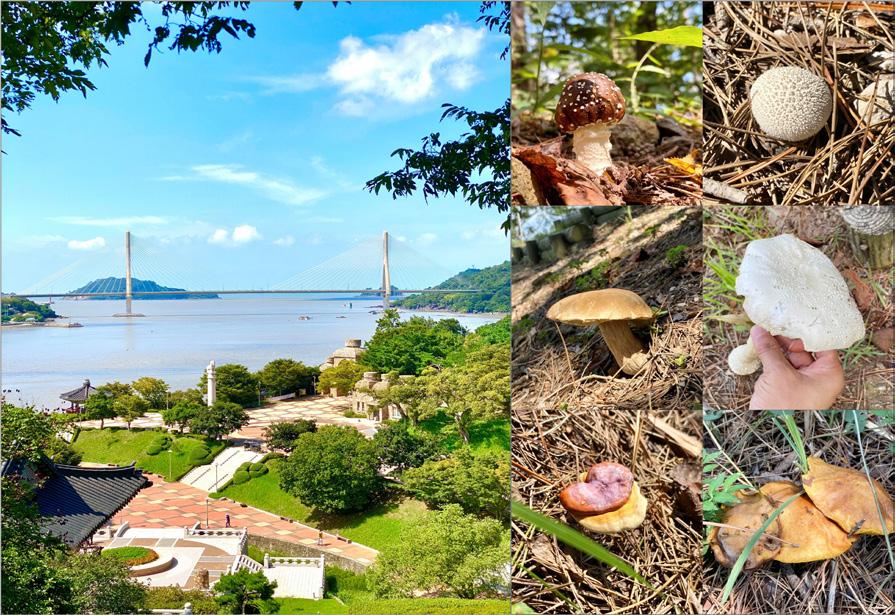
Along the way, we spotted mushrooms in all shapes and colors: tiny white domes on mossy trunks, coral-red caps hiding under ferns, and tall speckled ones standing like forest sentinels. The higher we climbed, the more the sea revealed itself, sparkling below the mist.
From the ridge, another bridge extended to a neighboring mountain. On the way down, a stone statue of a mouse caught our eye. The plaque beneath said, “The mouse is intelligent, it senses water.” A curious, symbolic guardian of this coastal sanctuary.
Down below, a group of motorcyclists from another island were passing by, their laughter mixing with the ocean’s rhythm. It was a joyful reminder that even sacred places can carry a playful heartbeat.
At the base stood a towering pillar modeled after Emperor Ashoka’s column from Nalanda, India, symbolizing the spiritual link between the two ancient civilizations. Though less ornate than the original, it stood proud, a marker of Buddhism’s
maritime journey. Standing there, I felt an odd sense of homecoming; an Indian monk had once landed here, carrying the same teachings born in my homeland.

Inside the exhibition hall, the displays traced that journey: artifacts, sculptures, and multilingual panels recounting how Bud dhism reached Baekje in 384 CE. The story goes that Mārananda (마라난타), an Indian monk from Gandhāra, traveled via the Eastern Jin Dynasty of China and arrived on these shores. King Chimnyu of Baekje welcomed him into the royal court, officially recognizing Buddhism, a decision that reshaped Baekje’s cultural identity.

Gandhara-style pagoda (top left). A sculpture of the birth and bathing of baby Buddha (top right). Buddha leaves the palace riding a horse to find enlightenment (bottom right). A number of Bodhisattvas attend to Shakyamuni, sitting in the center (bottom left).
From this moment, Baekje’s art, architecture, and diplomacy flourished. The kingdom became a beacon of Buddhist learning, later transmitting those teachings to Japan around the mid-6th century. The elegance of Baekje’s sculpture, seen today in finds from the Gunsu-ri temple site in Buyeo, reflects a harmony of Indian, Central Asian, and East Asian influences.

Location: Birthplace of Baekje Buddhism (백제불교최초도래지) 203 Baekje-munhwaro, Beopseong-myeon, Yeonggwang-gun, Jeollanam-do
How to Get There: From Gwangju, take a bus to Yeonggwang Terminal (about 1 hr. 30 min.). From there, local buses or taxis reach Beopseong-po in 15–20 minutes. Parking for private vehicles and bikes is available at the foot of the hill.
Best Time to Visit: Late spring to early autumn (April–October) offers pleasant coastal weather, and in September, vibrant fields of red spider lilies (상사화) are near the site.
What to See
• Four-sided sculpture of Buddha statues
• Ashoka-inspired stone pillar
• Coastal skywalk bridge
Many scholars note that Beopseong-po’s Jwaodu Village is now accepted as the monk’s first landing site, following a 1998 historical verification study by Dongguk University. The very name “Beopseong” (법성) translates beautifully: beop meaning “Dharma” and seong meaning “saint.” Standing at the lookout point, I imagined Mārananda’s ship approaching this same coastline sixteen centuries ago: sails creaking, monks watching the unfamiliar land rise on the horizon. The ocean here still feels like a messenger between civilizations.
What touched me most was not just the history but its continuity. The architecture of the park, the Indian motifs, and the peaceful rhythm of the sea; all seemed to echo a dialogue that began long ago between India and Korea.
The visit wasn’t planned, yet it felt meant to be. In that unplanned hour of sun and salt, the ride turned into a pilgrimage.

• Exhibition hall on Baekje–India Buddhism exchange
• Sunset from the upper ridge
Walking Route Tip
Take the elevator up, follow the ridge trail through the forest for panoramic views, then descend via the lower path toward the exhibition hall and sea promenade. Plan 60–90 minutes for a leisurely visit.
The Author
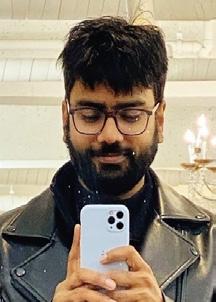
Vibhanshu Maurya, originally from India, is pursuing his PhD at CNU. He leads a vibrant lifestyle, driving his motorbike across the Korean Peninsula. He directed the Gwangju Hikers group and used to create podcasts that explored the challenges of residing in Korea and strategies for overcoming them.
Photographs by Vibhanshu Maurya.
By Dhivyaa S. P.
Island Explorer here, reporting on an expedition to the one of Jeollanam-do’s southern islands.
On a rainy day, me and my team of volunteers took a ferry from the port of Hwaheung-po in Wando to our destination island. We boarded the ferry for a 50-minute ride across the water to Bogil Island (보길도).
On board, the ferry had a large room where travelers could stretch out with small neck pillows, perfect for a quick nap. The top deck felt more like an observatory, with tables on an openair deck where you could watch the coastline drift by.

By the time we docked, the bus that had traveled with us on the ferry was waiting to take us to our accommodation, a seaside pension famous for its sunsets. Of course, with Korea’s monsoon in full swing, all we could see were misty skies and fog-wrapped mountains. Still, from the top floor, the view of the sea and surrounding cliffs was breathtaking in its own moody way.

Our main purpose was cultural exchange with the local school children. At the community center, we played traditional and international games, cleaned the beach together, and even held an “international snacks” competition. As the camp went on, we also prepared dances and songs for a friendly performance night. It was lively, chaotic, and full of laughter.
Bogil Island has its own twist on tradition. On our first evening, we sampled makgeolli highballs (Instagram: @bogilsea_brewery). Unlike massproduced versions, theirs is brewed simply with rice and pure spring water. While makgeolli isn’t
my favorite, my teammates swore it tasted fresher than anything from the mainland.
The next morning, we woke before dawn to visit an abalone farm. Riding a small boat across the sea, we caught the sunrise. My very first time to watch daybreak from the water. It felt like a dream my younger self once had – now suddenly real.
At the farm, a local guide showed us how to remove abalones from their nests. Coming from a vegetarian family, it was strange and uncomfortable for me, but I tried. The abalone wriggled in my hand, and I let out a startled scream while my friends laughed. Eventually, I managed to cut one free – with a little help from my teammate.
On the way back, our guide offered to take a few of us around the island by boat. I jumped at the chance. It was early, the sea breeze still cold but exhilarating. We passed abalone farms and waved at fishermen whenever we spotted one. As an MBTI I person, if those people were next to me, I wouldn’t even have made eye contact with them. But this was more fun than I thought.
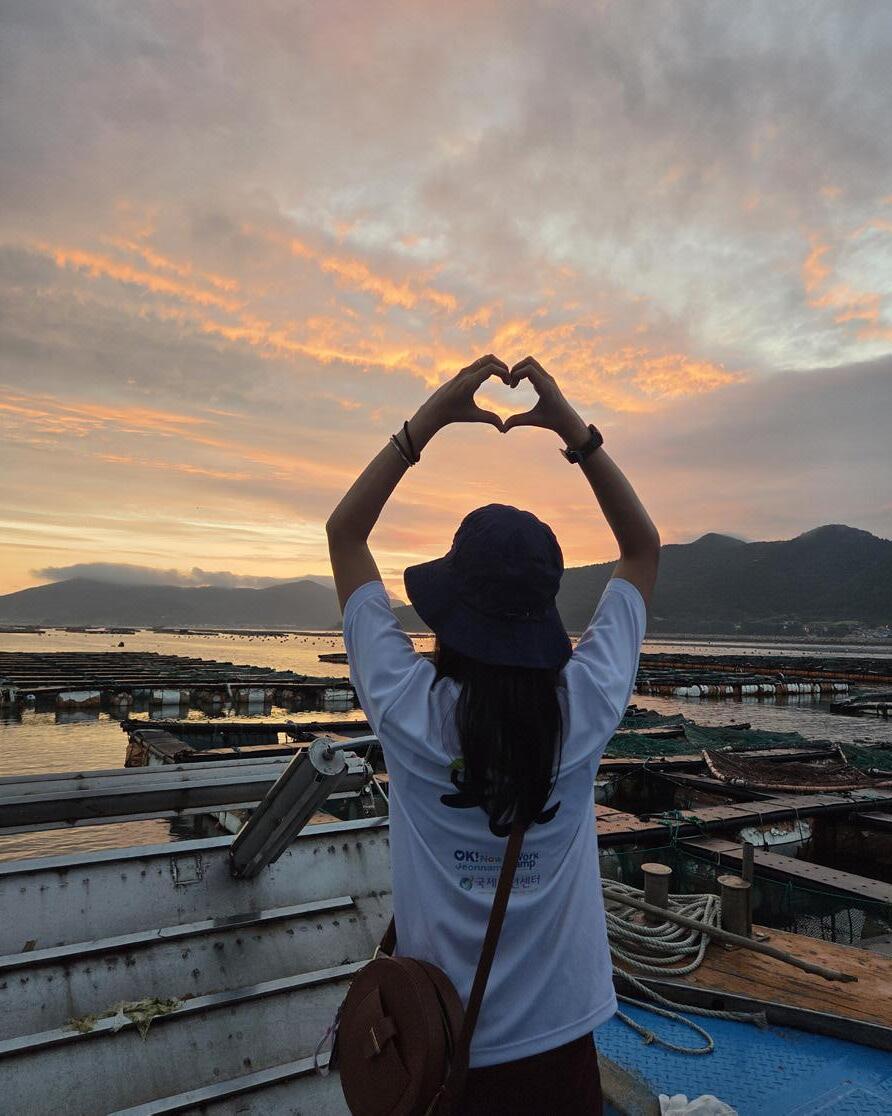
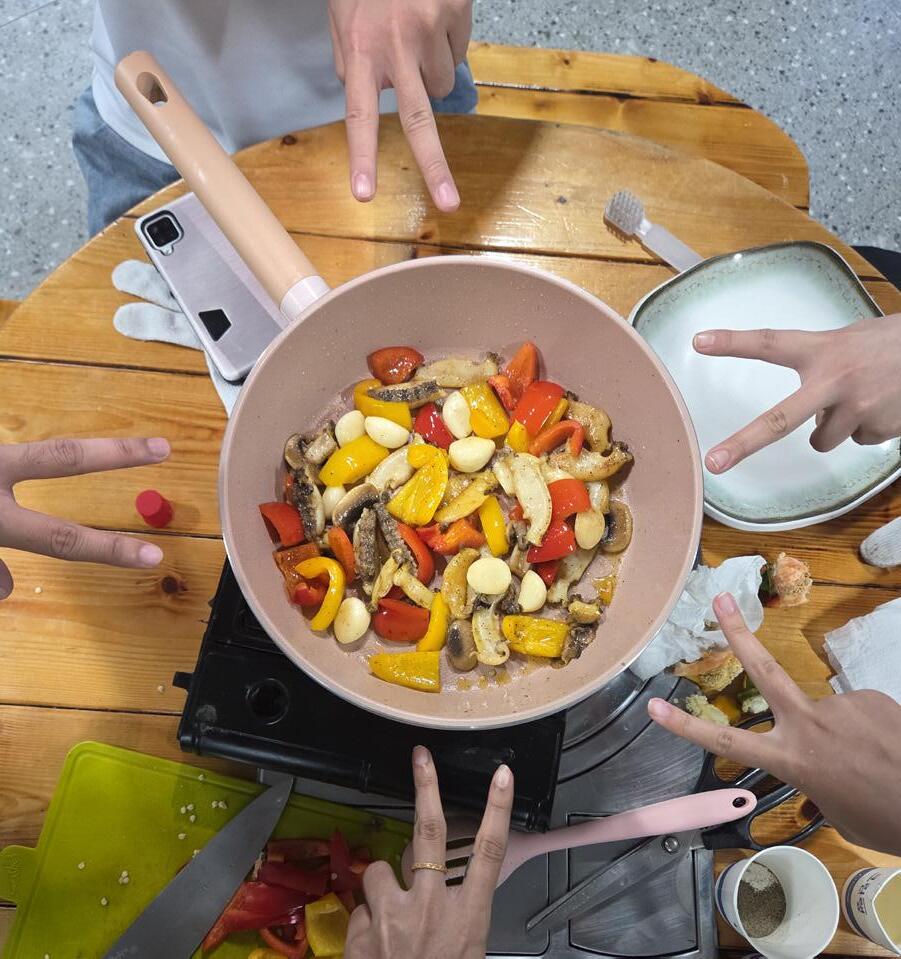

The guide pointed out hidden caves and rock formations shaped like animals. Just as we were snapping photos, the sky opened up and rain poured down. With no roof, we huddled behind the wheelhouse, laughing and shouting as the sea drenched us. At the time, it felt endless, but looking back, all I remember is the joy of that silly, soaking ride. First time to watch daybreak from a boat.
Back on land, we joined a cooking class where local chefs taught us how to make abalone dishes – stir-fried with butter, in ramyeon, and in savory pajeon. For someone who isn’t much of a cook, even chopping vegetables the right way was a challenge, but it was fun to learn.
Later, we visited the Yun Seondo Garden (which includes the pavilion Seyeon-jeong), one of Korea’s most celebrated traditional gardens. Designed by Yun Seondo, a Joseon-era scholar and poet, it blended nature and architecture in perfect harmony. We dipped our feet into the cool stream where poets once wrote, and ended up splashing around with the children.

The next day, our team joined in a beachcleaning activity at Tongni Beach. Most of the trash was styrofoam, something I hadn’t realized before. The villagers cheered us on with vitamin C drinks, and our camp organizers surprised us with ice cream. Time was short, so we couldn’t enjoy the beach as much as we wanted, but it felt good to leave it cleaner than when we arrived.
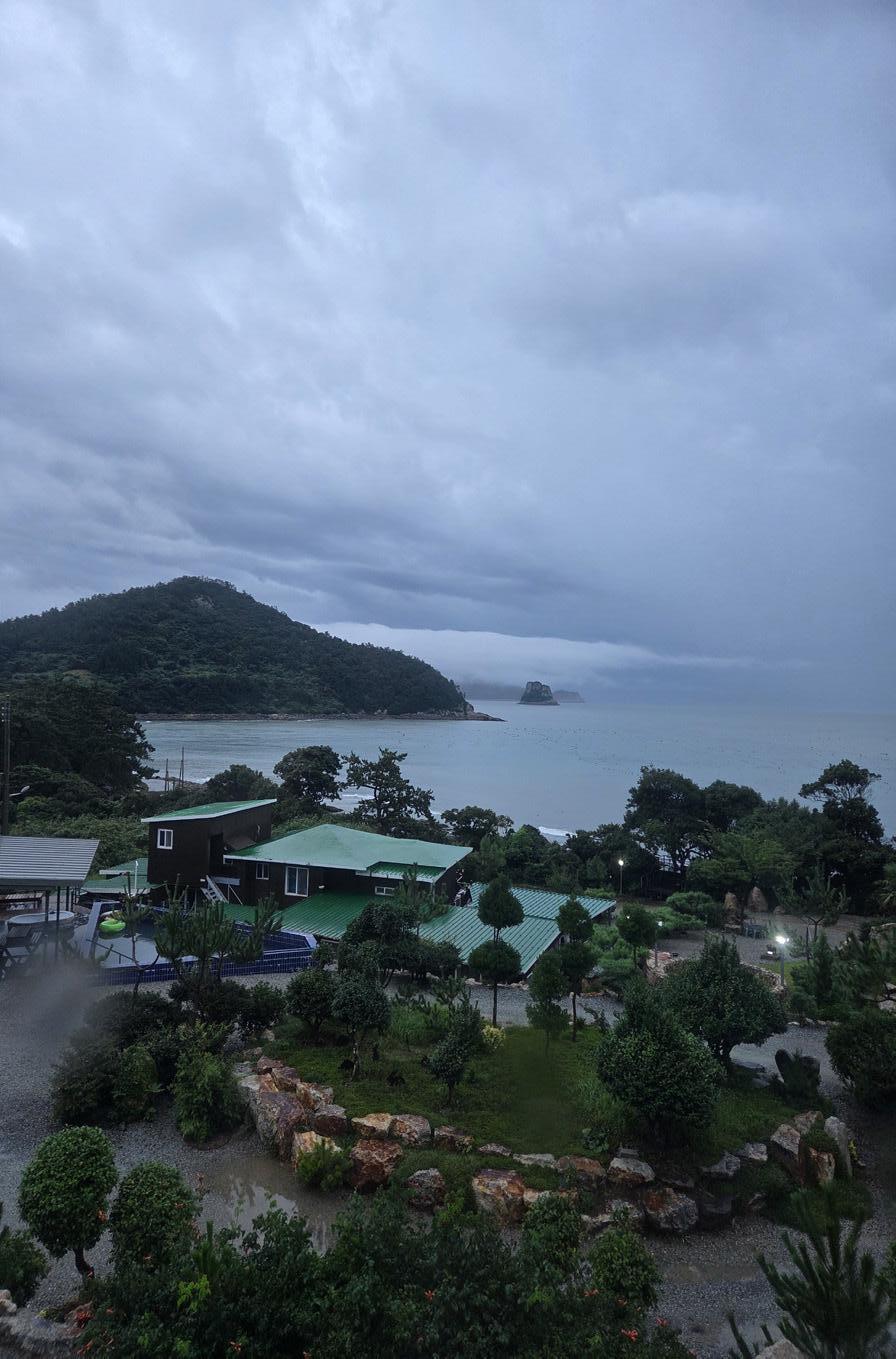
Everywhere we went, the islanders welcomed us warmly. They were patient with my clumsy Korean, eager to share their home, and generous with their stories. The air felt cleaner, the sea calmer, and the pace of life slower.
Bogil isn’t just an island. It’s a pause button. A place where a ferry ride delivers you into a world of fresh air, foggy mountains, and memories you’ll keep long after you leave.

The Author

Dhivyaa S. P. believes that every action, no matter how small, contributes to the bigger picture of change. Now beginning chapter three of her academic life, she steps into her PhD journey with curiosity and resolve, knowing that each page she turns brings her closer to shaping new knowledge for the world.
Photographs by Dhivyaa S. P.
By Murdock O’Mooney

American writer Mary Anne Radmacher once wrote, “I am not the same, having seen the moon shine on the other side of the world.” I can attest to the validity of this statement, having spent roughly 6.5 years of my life living in Gwangju.
When I first moved to Gwangju in October 2015 – which ironically was about 10 years ago – I had just finished graduate school and was determined to get a university position in South Korea. I had other motivations as well: the girl I loved was in Korea. After many interviews, I was hired as a lecturer at Chosun University. Thus began my sojourn in Gwangju. I quickly became involved in many enriching activities in the city, such as running trail races, writing for the Gwangju News, teaching (of course), publishing a travel book (Road Ramblings), and exploring regionally. Now that I again live and work in the USA, here are the things I miss most about living in Gwangju.
Topping my list is Mudeungsan National Park. I was lucky enough to live in Ulim-dong, which is right at the base of the mountain park. As such, I
quickly became familiar with the park’s temples, trails, waterfalls, creeks, old growth trees, and secret spots. Some of the best of these include Jeungsim Temple, Saein Peak, the Jungmeori-jae mountain pass, and the unique rock colonnades near the top of the mountain. I’m sure to always make a pilgrimage to Mudeung-san when visiting Gwangju these days.
The next item on my list is actually not a place but Gwangju hospitality, which was demonstrated through all the interesting people I met while living there. This included my colleagues at Chosun University, as well as Dr. Park who hired me and would take the entire office out for galbi (ribs) and drinks. I can’t imagine this is too common in 2025, but maybe I’m wrong.
There was also a local eccentric I knew only as “Kim.” Kim wore a leather vest, an old army helmet, and lived out of his scooter. He used to yell at me, “Hello, my friend!” every time he saw me. We couldn’t communicate very deeply due to language differences, but he was kind and showed me photos of his kids and family. He would sleep

in parks and bathe in restaurant bathrooms, or so he said, after his wife kicked him out. He liked the Kia Tigers, drinking beer, and doing pushups.
Then there was the local mudang woman who would sing shamanistic chants in the bamboo forest near my apartment. The hanbok she wore was beautiful and intricate, and she could be heard all the way down the valley. She would wave her colorful fan and smile at me as I ran past on the trail, transporting me to some earlier time in Korean history – the Joseon Dynasty maybe?
Regardless, this interaction I took to be special, and it has stayed with me ever since. The list goes on, but the local people of Gwangju always make me feel welcome and part of their community.
After the welcoming people of Gwangju, comes food. As many well know, the food in Jeollanamdo is among the best in South Korea. The rich ecosystem and close proximity to the ocean produces fresh ingredients and unique flavors. Just in my daily routine, I can remember eating samgye-tang stew at Chosun University’s

cafeteria before Seollal break that consisted of an entire small chicken, going to a dynamic and savory vegetarian buffet near the ACC, and having shabu-shabu with a view on the backside of Mudeung Mountain.
Some of my other favorite dishes from Jeollanamdo include Gwangyang bulgogi, oysters and beef bibimbap, spicy seafood stews, the various types of Jeolla kimchi, Boseong green tea, and ganjang gejang – a soy sauce-marinated crab dish. I also had the best dak-galbi (spicy stir-fried chicken) that I’ve ever tasted in Damyang at a small roadside restaurant. Exploring the countryside on my motorcycle and finding little places to eat used to be one of my favorite Saturday activities.
The next thing on my list is travel. Not many people think of Gwangju as a travel hub, but the city doesn’t do too bad in this department. For example, Muan Airport has direct flights to Taiwan, Jeju Island, Vietnam, Malaysia, Mongolia, Cambodia, and Laos as well as multiple cities in Japan. One can also travel to desirable regional destinations including Yeosu, Geojae, and Wando, where my wife and I camped out in a tent on the beach one summer night. There are also many national parks within driving distance of Gwangju, including Jiri-san, Hallyeo-haesang, Dadohae-heasang and Naejang-san, making Gwangju an excellent home base for exploration.
The Asia Culture Center and Chosun University campus, of course, also make my list. These might seem like obvious choices, but to me, they are the beating heart of Gwangju. On the weekend I first arrived in October 2015, the International Music Festival was in full swing (now rebranded as the ACC X Festival). It was inspiring to see people from all over the world celebrating life and existence through music, dance, and community. Beyond this, the ACC boasts Asian Culture Week, the Asia Literature Festival, the ACT Festival, not to mention all the remembrances and installations surrounding May 18. Chosun has its Rose Festival, Spring Festival, Fall Festival, and so much more.
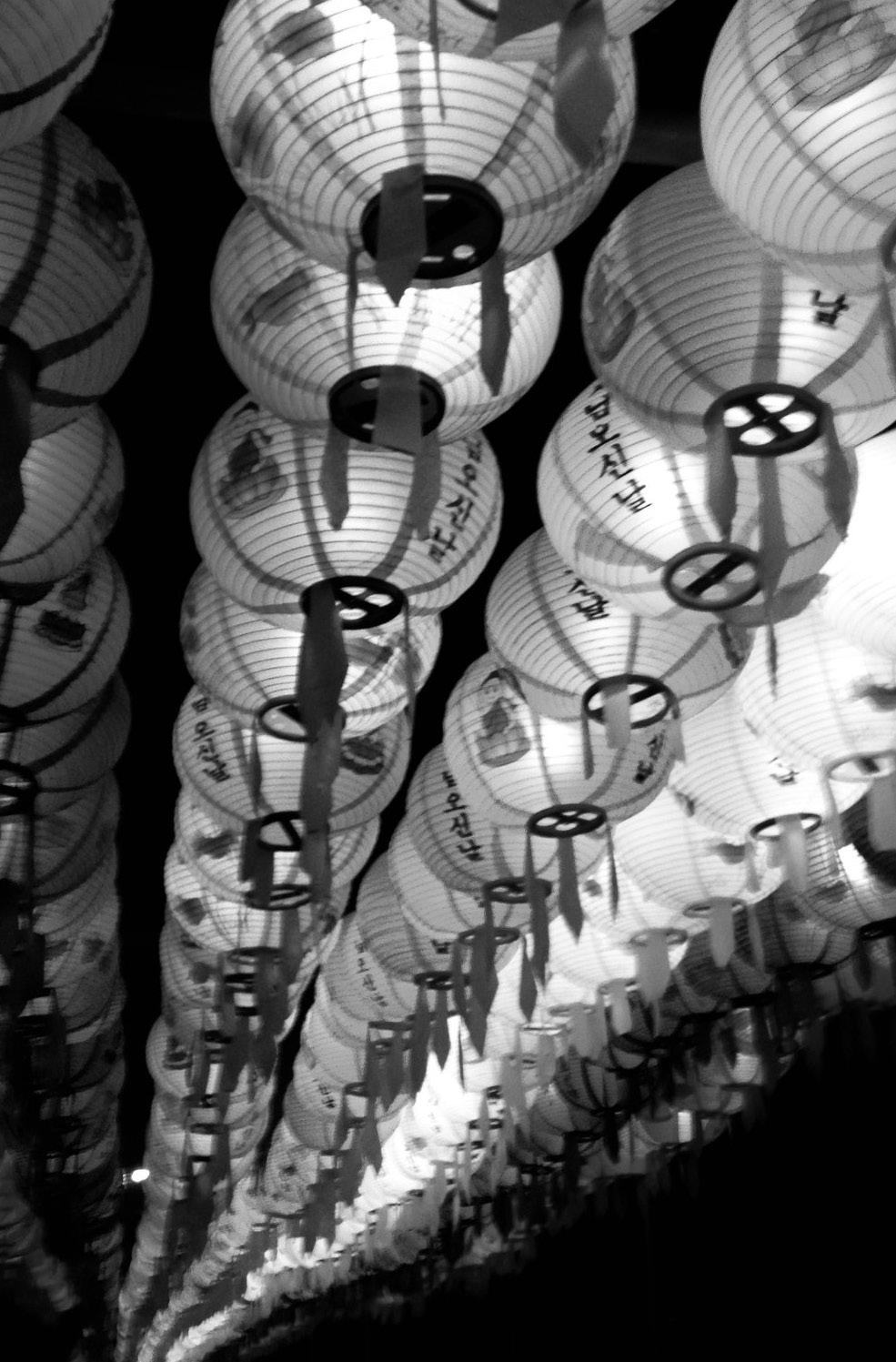
Gwangju truly does have something for everyone. I may miss living there sometimes, but I can always visit. And as celebrity chef and writer Anthony Bourdain said, “The journey changes you; it should change you. It leaves a mark on your memory, on your consciousness, on your heart, and on your body.” According to Tony, Gwangju did what it was supposed to do to me: It changed me. For that I am grateful. Gamsa-hamnida, “City of Light.”

Sources
Bourdain, A. (2002). A cook’s tour: Global adventures in extreme cuisines. Ecco.
Mudeungsan National Park. (2025, April 28). In Wikipedia. en.wikipedia.org/wiki/Mudeungsan_National_Park. National Asian Culture Center. (n.d.). https://www.acc. go.kr/en/index.do
Radmacher, M. A. (2023). Quotes. Goodreads. https://www. goodreads.com/quotes/71568-i-am-not-the-samehaving-seen-the-moon-shine
The Author Murdock O’Mooney is an educator and writer based in Albuquerque, New Mexico, USA. He lived in Gwangju and worked at Chosun University from 2015 to 2022. He’s interested in geopolitics, education and trying to help build a more just world.

Photographs by Murdock O’Mooney.
By Farrukh Anique
It is that time of the year again – when bus terminals swell with restless crowds, train stations turn into rivers of rushing footsteps, and roads overflow with cars inching forward like determined ants returning to their hill. Marts and department stores line their aisles with glittering gift boxes brimming with fresh autumn fruits, neatly packed jars of premium nuts, and endless assortments of chewy, colorful tteok (rice cakes). If you stand at any street corner for just a moment and watch carefully, beneath the hurried footsteps and impatient sighs, you can sense the quiet glow of anticipation. Faces flushed with fatigue are still illuminated by an inner excitement they cannot fully hide. These people – gripping oversized gift bags in one hand and clinging to the overhead safety handle of a bus with the other, swaying with every turn yet smiling as if carried by something lighter than the vehicle itself – where are they all going? They are going home!
This is the holiday season in Korea. One of the two biggest celebrations of the year, Chuseok, often explained as the “Korean Thanksgiving.” It is the time when everyone returns to their hometowns to visit family, pay respects to their ancestors, and share long tables filled with traditional food and familiar voices. What a beautiful sight. Pure joy unfolding across the country.
But pause for a moment. While one house in a quiet village bursts with laughter over jeon and songpyeon (pancakes and rice cakes), somewhere in a corner of a convenience store in the city, someone is quietly microwaving a bowl of instant noodles. While one family stands together at their ancestral graves, bowing in unity, someone far away is quietly thinking about the day they couldn’t fly home to say a final goodbye to their grandfather. This is the life of an immigrant during the holiday season. While this time of year is filled with joy for the locals, it is often when immigrants struggle the most.

Chuseok is a festival built on the foundation of family, to celebrate their roots; for an immigrant, that is precisely where the wound lies. They are thousands of miles away from their roots, their family, with no chance of seeing them anytime soon. Every laughter-filled gathering, every televised celebration, every social media post of families reuniting, serves as a gentle reminder of what they are missing out on. When coworkers speak fondly of their grandmother’s songpyeon or childhood games in the village, the immigrant is instantly transported back to their own memories, festivals in their home country – the smell of familiar food, the sound of their cousins teasing and laughing. Imagine living in a neighborhood where every door opens to reunions, yet yours remains closed. Imagine standing at your window watching families arrive with suitcases and flowers, while you sit alone on your bed, scrolling through social media, stopping at a reel of a mother counting days until her child returns, a melancholic song playing softly in the background. This is not just loneliness. This is a quiet ache that returns every year without invitation, one of the heaviest seasons in an immigrant’s life.
Every Chuseok, on the last day before the holiday begins, our professor casually asks everyone in the lab about their plans. The Korean students answer with excitement in their voices; hometowns, family reunions, feasts are waiting for them. Then it’s our turn. The foreigners. We smile awkwardly and say we don’t have anything special planned. Someone jokes that they’ll finally catch up on the sleep they’ve been missing all semester, and everyone laughs, including us. But laughter has a short life. Because at 1 a.m. that same night, most of us are still wide awake, staring at the ceiling. We think about how tomorrow is supposed to be a holiday, but there’s nowhere to go, no one waiting for us. So, we tell ourselves, “Might as well go to the lab and work on that paper we’ve been avoiding for a month” – not out of passion but simply because doing nothing hurts more than doing work.
Long-term immigrants eventually learn how to cope with this season in their own quiet ways. Some invite a few foreign friends over for a simple homemade dinner. Others go out to nearby restaurants with people from their own country, sharing food that tastes nothing like memory. A few even join expat trips organized by community groups, pretending it’s a holiday and not just a distraction. These things do help. They create a brief illusion of belonging, a temporary warmth that makes the world feel a little less distant. But still, there is something about holidays that presses on an old bruise. It awakens a quiet conflict inside, a conflict about cultural identity and a sense of belonging.
This feeling isn’t limited to Chuseok. It strikes again, in a different shape, when it’s our holiday back home, but here in Korea, it’s just another working day. For me, that holiday is Eid, the biggest celebration in Pakistan. Back home, the morning begins with new clothes, cheerful greetings, the entire neighborhood gathering at the mosque for Eid prayer, and a big table filled with all kinds of curries, colorful desserts, and freshly made naan. Here, the routine is different. We still go for the morning prayer, but as soon as it’s over, we rush straight back to our labs as if nothing happened. Meanwhile, our families keep
calling to wish us Eid. And we keep declining them with a polite text; “I’m at work. Please text.” This year, one of my friends didn’t even make it to the mosque. He had an early meeting with his research collaborators. No matter how much we try to convince ourselves otherwise, this does not feel like Eid.
Chuseok and Seollal are the moments when Koreans feel most deeply connected to their culture, to their families, their food, their roots. Yet for immigrants, these very moments become quiet reminders of how far away we are from our own. Our Korean coworkers, lab mates, and friends are often thoughtful and kind, giving us Chuseok gifts or checking in with warm messages. We appreciate it more than we say. But still, holidays bring something with them that just triggers a subtle but deep sense of alienation. Holidays are about homes. But what is home, truly? Is it a location on a map thousands of miles away, or is it simply the people who know your childhood stories without needing explanation? When we leave our homeland, does home stay behind? Or does it travel with us in fragments?
Maybe one day, Chuseok will feel different. Maybe it won’t just be a long weekend to sleep through or a road trip with people we barely know. Maybe it will become more than a polite gathering of strangers who share neither our past nor our traditions, only our longing. Maybe one day, Chuseok will not be something we quietly endure, but something we can proudly belong to. And maybe, when someone asks, “Are you going home for the holidays?” we’ll smile and answer, “Home? I’m already here.”

The Author

Farrukh Anique is a PhD student immersed in mechanical engineering at Chonnam National University. Originally from Pakistan, he’s not all about gears and equations though. He’s got a real love for the performing arts, culture, literature, and languages. He is an amateur theater actor, short-story writer and speaks five languages. In his spare time, he dives into Korean culture and history, soaking up the vibrant traditions and stories that spark his curiosity. Oh, and he absolutely loves strawberries.
By Quynh Chau

When two regions share a heart for community, resilience, and hope, distance becomes only a detail. Such is the story of the friendship between Gwangju Metropolitan City and Nghe An Province in Vietnam – a partnership that has quietly but steadily grown since their friendship and cooperation agreement, connecting two locales rich in history and human warmth.
The friendship and cooperation agreement between Gwangju and Nghe An was established to strengthen cultural, economic, and peopleto-people exchanges. Gwangju, known as the City of Light and the heart of Korea’s democratic movement, and Nghe An, famous as the hometown of President Ho Chi Minh, both
represent the spirit of freedom, perseverance, and compassion.
The partnership began with the aim of promoting mutual understanding, economic collaboration, and cultural exchange between local governments, businesses, and citizens. Over the years, delegations from both sides have exchanged visits, signed cooperation memorandums, and explored joint projects in areas such as education, culture, and environmental sustainability.
Located in north-central Vietnam, Nghe An is the largest province in the country, blessed with a harmonious blend of mountains, rivers, and a long coastline stretching over 80 kilometers. Its capital city, Vinh, is a rapidly developing
urban center that connects northern and central Vietnam through both highway and seaport systems.
Nghe An is not only geographically large but also historically and culturally rich. It is the birthplace of President Ho Chi Minh, whose legacy continues to inspire generations of Vietnamese. The province is also known for its traditional folk songs such as Ví and Giặm, recognized by UNESCO as Intangible Cultural Heritage.

The friendship between Gwangju and Nghe An is still young, but it stands on a solid foundation of mutual respect and shared aspirations. In the future, both regions hope to expand cooperation in digital innovation, youth entrepreneurship, and climate resilience – fields where local governments and communities can make a global impact together.
For Gwangju citizens, learning about Nghe An is not just about discovering another place – it’s about understanding how friendship can grow across borders, guided by empathy and shared values. As the world becomes more connected, stories like Gwangju and Nghe An’s remind us that true friendship between cities begins with the heart and lasts through collaboration and understanding.

References
Today, Nghe An is emerging as a hub for logistics, manufacturing, and education, attracting investment from both domestic and international partners. Its people are known for their diligence, hospitality, and deep sense of community –qualities that echo the spirit of Gwangju.
Since the signing of their friendship agreement, Gwangju and Nghe An have explored multiple ways to strengthen their relationship. As cultural exchange, artists and cultural groups from both sides have participated in festivals and exchange events, introducing traditional Korean and Vietnamese arts to new audiences. As educational cooperation, universities and institutions have discussed joint research, student exchanges, and language training programs to help young generations understand each other’s cultures. In economic and environmental collaboration, local governments have exchanged ideas about urban development, renewable energy, and smart city initiatives, sharing experiences that could support both regions’ sustainable futures.
International Information and Networking Centre for Intangible Cultural Heritage in the Asia-Pacific Region. (2015). Ví, Giặm Nghệ Tĩnh recognised as UNESCO Intangible Cultural Heritage. In Intangible Cultural Heritage Safeguarding Efforts in the Asia-Pacific https://archive.unesco-ichcap.org/kor/ek/sub1/pdf_file/ south_east_asia/2015Vietnam/Field%20Survey%20 Report_Vietnam_full.pdf?utm_source=chatgpt.com
Thanh, N. (2022. December 3). Nghe An participates in an e-sports exchange tournament between twinned localities with Gwangju (Korea). Nghe An News. https:// baonghean.vn/en/nghe-an-tham-gia-giai-the-thaodien-tu-giao-luu-giua-cac-dia-phuong-ket-nghia-voigwangju-han-quoc-10247730.html?utm_source= chatgpt.com
Thanh, H. (2023, May 20). Nghe An Province’s working delegation meets with leaders of South Korea’s Gwangju City. Nghe An News. https://en.baonghean.vn/nghean-province-s-working-delegation-meets-with-leadersof-south-korea-s-gwangju-city-10254596.html?utm_ source=chatgpt.com
Thanh, H. (2023, May 22). The People’s Council of Nghe An meets with the Gwangju City Council (South Korea). Nghe An News. https://en.baonghean.vn/the-people-scouncil-of-nghe-an-meets-with-the-gwangju-citycouncil-south-korea-10254706.html
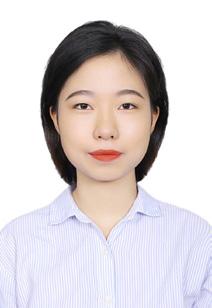
Quynh Chau is a Vietnamese student currently studying in Gwangju and is proud to see how Gwangju and Nghe An, both symbols of resilience and warmth, continue to learn from each other. She believes this partnership will inspire many future generations to build bridges of friendship and cooperation between Korea and Vietnam.
This column features each month one of our regular writers for the Gwangju News, allowing our readers to get to know them better. This month’s interview focuses on Michael Attard, long-time book reviewer for the Gwangju News. — Editor

Gwangju News (GN): Hello, Michael. Thank you for making time for this interview. You’re a longtime book review columnist for the Gwangju News, and you review books of a wide variety of genre and topics. What might your favorite genre or topics be?
Michael: My favorite genre is historical fiction. I have always believed that for society to be able to create a promising future, citizens must have a knowledge of and an understanding of what previous generations have experienced, endured, and created. For me, those without a sense of history cannot understand the present or be fully grateful for what they have. Thus, when an author is able to bring the past to life, the reader is able to gain both a better understanding of the world and themselves.
GN: You must have quite a collection of books at home. How do you acquire your books – do you purchase them locally or possibly online?
Michael: There used to be a book store in Seoul called “What the Book,” but it suddenly closed in 2019. They had a large selection of English language books and provided quick and cheap delivery. Since then, I have used Amazon, buying a few books at a time. But recently Amazon has required a custom clearance number if books are sent from the US to Korea. Apparently, this is for Koreans only, so I always need my wife’s help.
At other times, when I travel abroad, I search out local bookstores. I generally have a few titles in mind but have found many interesting books through simple browsing. A third source of books is a good friend who belongs to an English reading book club. She is not as emotionally attached to her books as I am, and she generally passes them on to me.
GN: You’ve lived in Gwangju for quite some time now, but I wonder what you did before coming to Korea, and what it was that made you decide to cross the Pacific and come to Korea?
Michael: I was fifty years old when I came to Korea, so I had had various jobs in Canada. After graduating university with an arts degree, my first full-time job was an inventory control clerical position, working in a large grocery distribution center. After five years, I changed companies but stayed in the same business, taking on at first a supervisory role, followed by a management position. Eventually this treadmill wore me down; I quit my job, sold my house, and moved to a theater town called Stratford in western Ontario, Canada. There, I opened a bed-andbreakfast. I purchased an old Victorian home,
and I could accommodate up to nine guests. But this business was seasonal, and I found myself back in the grocery business, this time in retail. My wife and I continued to run the bed-andbreakfast over nine seasons.
In 1998, I began studying for my mutual fund license, and a few years later, I became a certified financial planner. But basically, I had become a salesman, and after a few years, this job too was wearing me down. I started looking for something else. Nothing appealed to me. But every day when I looked in the newspaper, I saw the same advertisement: Teach English in Asia. Well, one day I followed up on the ad, and the rest is history.
GN: In addition to your many book reviews, you have written an article on your recent trip to Iceland (Gwangju News, August 2025) as someone who enjoys “adventure travel.” Where else have you adventured to internationally? And what about within Korea?
Michael: I have been to five continents. Australia and Antarctica are still on the bucket list. My first real adventure was in 1972–1973, when I traveled in western Europe and North Africa. It was a different world then, and I’ll always remember crossing part of the Sahara Desert – from what at that time was the Spanish Sahara – into southern Morocco. There was no road, only tracks, and I was perched on top of a truck, holding onto ropes so I wouldn’t fall off.
My pace of travel picked up after I retired. I had a wonderful adventure in Mongolia, traveling from close to the Chinese border in the Gobi Desert all the way north to just shy of Russia. As a young boy, I longed to travel the Silk Road, and my trip to Uzbekistan, fulfilled this dream. There have been many trips within Asia, and I have traveled to more than 30 countries.
GN: That is quite a travel resumé! You just mentioned that you are now retired. As a final question – actually, a two-part question: Did you spend your working days in Korea as an English
teacher, and what do you do now in retirement, in addition to reading?
Michael: I love the life of a retiree. Other than teaching English, I have had no other jobs in Korea. Most of the time, I worked for the Gwangju Board of Education as part of the EPIK program. When I first arrived in Korea, I worked at an English academy for two years. I finished my career at an English reading room, where I didn’t need to deal with class management.
Now that I am retired, it is important to me to stay in touch with people. Each month I make a point of seeing friends, either for lunch or on a Saturday night for a few beers. At home, in addition to always having a book on the go, I have been studying Korean. Sometimes this seems futile, but I keep trying. I have a good friend who I meet once a week for Korean conversation, in return for an English lesson for her daughter. I like to stay physically active, generally hiking when the weather is fine. And often I am planning my next trip abroad.
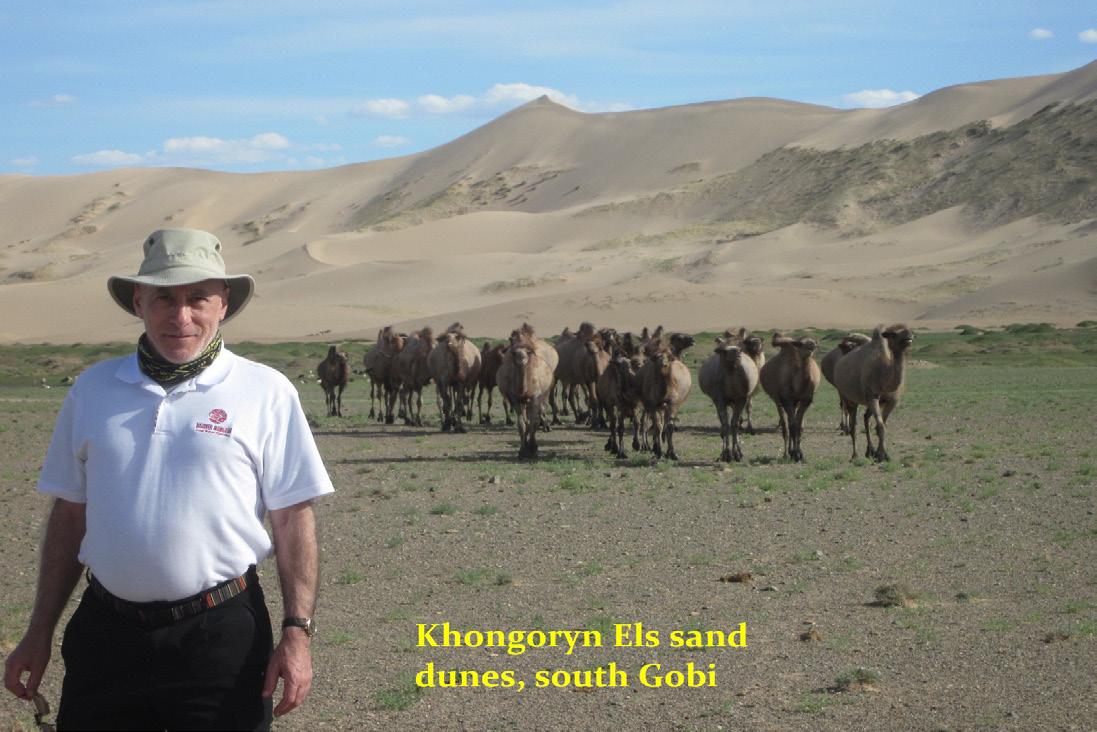
GN: Thank you for giving us a look into the life of Michael Attard. We look forward to many more interesting book reviews from you – and a future article on your travels to Australia and Antarctica!

Interviewed by David Shaffer Photographs courtesy of Michael Attard.
By Yun Seongsuk

New Beginning
South Korea continues to face challenges balancing work and family life, particularly childcare before and after school. To address this, the Ministry of Education launched the Neulbom School nationwide in 2025 – a unified system that combines education and care. The term neulbom (늘봄) means “forever spring,” reflecting a nurturing space where children can grow and thrive.
In Gwangju, Neulbom programs are organized into morning, afternoon, and evening sessions. Evening Neulbom is supported by local childcare centers, offering this additional care for families who need it. This locally adapted model ensures that children are safe and engaged while families receive practical support.
The Neulbom School is South Korea’s national edu-care initiative, designed to support both children’s growth and families’ work–life balance. Launched nationwide in 2025, it brings together
and strengthens existing after-school and care services under a unified system. Notably, it has introduced daily enrichment programs tailored to younger students and expanded care services across all elementary grades.
Afternoon Neulbom, the core program after regular classes, includes three types of programs:
Customized Programs (맞춤형 프로그램): These are free, daily enrichment-based care sessions for first- and second-graders, lasting about two hours per day. Activities are tailored to students’ developmental needs and may include play-based learning, science, arts, physical activity, and emotional support. Schools design and operate these programs to create a warm, nurturing space for young learners.
Selective Care Programs (선택형 돌봄): These optional, free care services are available to students in Grades 1 through 6. They focus on providing a safe and relaxed environment for rest, play, and basic daily support before or after school hours. Program availability depends on school capacity and family needs.
Selective Education Programs (선택형 교육): These are low-cost optional classes for Grades 1 through 6, covering subjects such as music, English, coding, arts, and sports. In Gwangju, first-graders are fully subsidized (720,000 won per year), while additional fees may apply in the higher grades depending on the program.
Gwangju follows the national Neulbom framework while adding local strengths. One example is financial support for selective programs: in 2025, all first graders in the city were fully subsidized (720,000 won per year) for
participation in selective education classes such as art, robotics, or sports. In addition, Gwangju offers evening care in partnership with local childcare centers located near schools, helping families who need extended support beyond regular hours.
A weekend Neulbom program is available at the Neulpum Regional Hub Center (늘품거점늘봄센터) at Hyodong Elementary School in Buk-gu. It provides care on Saturdays and Sundays (9 a.m. – 5 p.m.), including enrichment activities, meals, and emergency support. Priority is given to students who may have limited caregiving support at home, based on school-specific criteria.
The Gwangju Metropolitan Office of Education’s Neulbom Support Center (광주광역시교육청
늘봄지원센터) provides overall coordination and professional guidance to schools, supporting teachers and families while ensuring smooth operations. Beyond these structured supports, it’s the everyday moments at school – children exploring, playing, learning, and being seen –that truly reveal what Neulbom means to them.
I often see how students use Neulbom in ways that reflect their personalities. Some prefer quiet activities like drawing or reading, while others enjoy science experiments, music, or group games. Many simply appreciate a warm, welcoming space to relax and chat with friends after school. A first-grader once told me, “I was really thankful when a Neulbom volunteer helped me find the classroom I was looking for.”
Small moments like this add up, showing that when children feel seen and supported, even a regular afternoon can become something special.
Here are a few tips for how parents can make the most of Neulbom:
• Check the school’s guide every month. Details are shared online through school messaging apps like e-Alimi.
• Once you receive the Neulbom schedule via e-Alimi, make sure to apply early – some
popular programs fill up quickly.
• Talk with your child before applying. Discuss their interests and choose programs together –it helps them feel involved and excited.
• Create a simple timetable at home to help your child manage their activities. This supports independence and builds good habits.
• Plan for safe commuting. Parents remain responsible for safe travel to and from school.
In addition to school-based Neulbom programs, Gwangju has many well-established community childcare centers (지역아동센터) offering a wide range of programs. These centers provide after-school care, homework support, meals, creative activities, and occasional field trips. By participating, children can explore activities that match their interests and personalities beyond the school setting.
For parents, these centers complement schoolbased services by providing flexible, communityrooted support. Since space is limited, families are encouraged to contact a nearby center to check availability. Most communication at both Neulbom programs and community childcare centers is in Korean, so basic language skills can be helpful for international families.
Neulbom gives children a safe and enriching space to explore their interests. For parents, it provides peace of mind, easing the daily challenges of childcare. Yet this support is a tool, not a substitute for home. The most meaningful experiences for a child often happen in simple, shared moments with loved ones. By working together, we can ensure every child’s afternoon is safe, enriching, and full of joy – a “forever spring” nurtured both at school and at home.

Yun Seongsuk loves music, the lively stir of spring, and the wide blue skies of fall. In 2025, she began a new journey as one of the city’s first 50 Neulbom support officers, working with several elementary schools in Gwangju. With a background as an elementary school teacher and English Center manager, she now enjoys learning through new experiences – outside the classroom, but still close to the heart of learning.
By Anastasiia Andriievska
Iattended Chonnam National University as a scholarship student in 2024. I first began by studying the Korean language, and soon after, I joined the UNESCO KONA volunteers of the KONA Storybook Center. It was one of the most incredible experiences of my life. Before coming to Korea, I already had some volunteer experience, but here, while working with children, I truly realized how meaningful volunteering is for me.
At the beginning, it was challenging because I did not know Korean well, and communicating with the children was difficult. However, with every class, I learned together with the kids and adults, and we gradually got to know each other better. At the KONA Center, I shared about Ukraine, our culture, and traditions, while also mentoring English to children. At the same time, I was able to learn more about Korean culture.
KONA is truly a special place for both Korean and international volunteers. It is a space where people are open to new cultures and to each other – through stories, books, and conversations. We also had meaningful experiences at the Jungheung Library in Buk-gu, where we organized informal reading groups.
What pleasantly surprised me at KONA was that one of the methods used for teaching English was speed reading. I was especially impressed because this method is also widely used in all primary schools in Ukraine. It helps children acquire language skills faster and become more confident in their speaking abilities.
I also gained valuable experience volunteering at two elementary schools in Gwangju, where we gave interactive presentations about Ukraine. These sessions combined English learning with
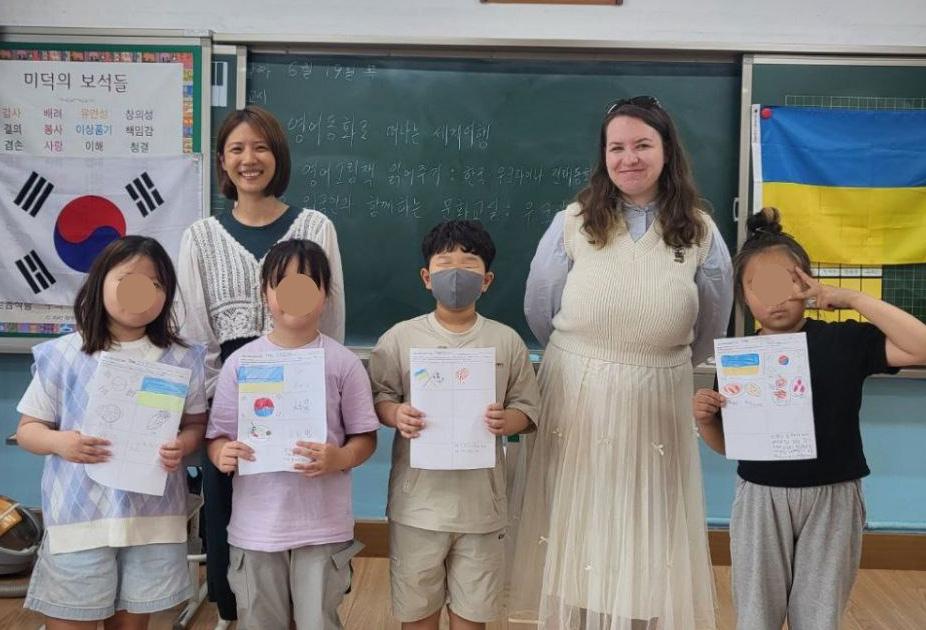
cultural exchange. What touched me the most was how curious and active the children were, asking many questions about my home country.
This experience will not be wasted. Now, having completed my studies in Gwangju, I have returned to Ukraine. My younger brother has just entered the first grade, and I am teaching him English using the very same methods I practiced as a volunteer at UNESCO KONA.
Through volunteering, I have realized how important intercultural exchange is in our time. It is not only about sharing Ukrainian and Korean culture or learning English. Most importantly, it is about building partnerships and friendships among people for a greater, shared future.

The Author
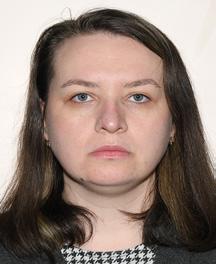
Anastasiia Andriievska was a Global Korea Scholarship student from Vinnytsia, Ukraine, until earlier this year. She graduated from Vinnytsia National Technical University with a degree in computer science. In addition to developing her expertise in artificial intelligence, she also values intercultural experience and personal growth.
Photograph courtesy of Anastasiia Andriievska.
By Kamila Ismanova
The last eight years of my educational journey have taken place within two vastly different countries: South Korea and Australia. I’ve been privileged to complete my undergraduate studies at Chonnam National University, which carries marks of the Gwangju Uprising and its historical impact on South Korean democracy. Followed by the completion of dual master’s degrees at the University of Wollongong, a major innovation hub that offers more than three hundred courses over nine Australian and four international campuses. Gwangju and Wollongong are homes to CNU and UOW, the universities that played a crucial role in the history and development of their local communities.
Growing up in Uzbekistan and Russia, where the education system strongly differs from both South Korea and Australia, allows me to form a unique perspective on academic similarities and differences, which might be of interest to undergraduate students determined to obtain a postgraduate degree abroad, as well as to the general public.
Australian postgraduate studies are mostly divided into lectures and tutorials. Similar to its Korean counterparts – lectures are a type of class where the material is introduced by lecturers to the cohort in recorded or online forms, even post-pandemic. While lectures allow a limited time for Q&A, they are not generally interactive. On the other hand, tutorials are practical classes where interaction is not only encouraged but expected. While recorded lectures are uploaded

on a weekly basis with an online quiz or two, tutorials are usually held fortnightly, sometimes weekly, for a duration of two hours. If the degree is offered on a trimester basis, then there will be ten lectures and five tutorials, which are equal to twenty hours of curated study time within the trimester.
While fortnightly classes might seem scarce, this curriculum structure takes into account that postgraduate students might be working full-time or have young families in addition to their studies. Every student is expected to be fully independent and in charge of their learning, considering the ever-increasing tuition fees. Students are encouraged to reach out to their lecturers and tutors to schedule time for one-on-one sessions, where they can ask for guidance on individual projects, group presentations, and exams.
Lecturers and tutors in Australian universities are seen as academic facilitators rather than authoritative figures. They encourage and motivate students to stay curious, ask questions,
show initiative, and try to figure things out independently. All opinions are welcomed, further solidifying a strong sense of inclusivity. The lack of vertical academic hierarchy between students and educators fosters productive and open conversations. It’s not uncommon to call one’s professor by their first name or grab a drink with one’s tutor to celebrate the end of the trimester.
While university students in Korea cram vehemently before their exams, the students in Australia are buried beneath dozens of peer-reviewed academic journals to support their writing. Both education systems value collaboration between students and often assign group projects designed to imitate a real-life workplace project.
There is a high emphasis on improving mental health across the campus, especially during exam weeks. UOW has The Pulse, a not-for-profit organization, that facilitates various cultural festivals like Diwali, wellness and art activities, concerts, and self-improvement workshops. Since Wollongong is a coastal city, students can always go to the beach or for a hike up Mt. Kembla (think smaller Mudeung Mountain). The culture of burnout is strongly discouraged, and students partake in social sports.
According to CNU, a year of postgraduate studies in business administration costs roughly $3,238 USD, while the full MBA program that goes for one and half years would cost $40,000 USD on average in Australia.
Australian students are eligible for HECS-HELP – the Higher Education Loan Program – whereas international students can get scholarships or bursaries based on their previous academic performance and transcript.
It is painfully obvious that South Korea offers affordable tuition fees to both local and
international students, while Australian tuition fees increase year by year to astronomical heights.
It is widely known that the Korean job market is highly competitive and intense, but landing a job after graduation in Australia, especially as an international graduate, is not a walk in the park either. In fact, students start learning job hunting strategies as a part of their elective subjects’ program. It can only be compared to a brutal battlefield of wielding resumes and cover letters, pulling every personal connection and bombarding every recruiter with a string of emails. Australian universities encourage students to start building a LinkedIn presence way before they graduate in hopes that students will build a network and integrate into the local professional workforce sooner rather than later. One of the most important factors in hiring an international graduate is the ability to be the right cultural fit.
Studying abroad is a life-changing experience. It comes with its challenges and rewards. Whether the reader might want to visit Australia as a tourist, to improve their English, or visit as an exchange student, they’ll find not only great universities but also a beautiful culture built on a passion for sports, with stunning beaches, and really great coffee!

Sources
2025 MBA Fees in Australia. (n.d.). MBA News. https:// www.mbanews.com.au/mba-fees-australia/ Tuition. (n.d.). Chonnam National University. https:// global.jnu.ac.kr/Academics/Resources/Tuition
Kamila Ismanova has taken the scenic route through life and journeyed from Korea to Australia, landing down under to collect not one but two master’s degrees. Part-time overachiever, full-time marketer – forever chasing stories, sunshine, and strong coffee.
Photographs by ArtisoRisi for UOW.
By Erva Ozkan
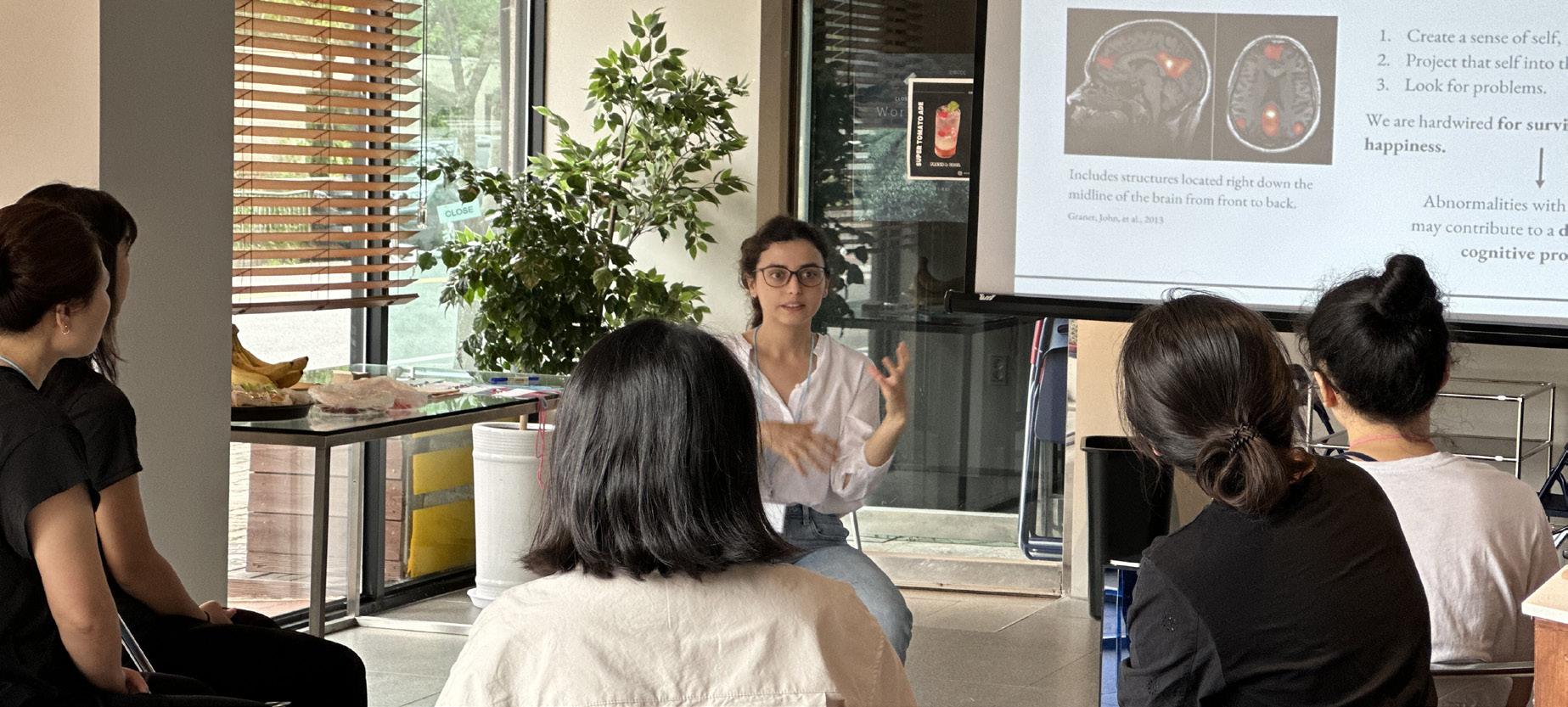
What does it mean to build a life in a country where the language, culture, and system feel completely different from your own?
During my first year in Korea, I sat in the laboratory (I was the only Westerner), listening to people talk and laugh around me. When I returned to my dorm and picked up the phone to speak with my mother, I realized it was the first word I had spoken all day. This isolation eventually ended up as major depression. Living far from home, it’s easy to feel a silence and a loneliness that can weigh more heavily than anything experienced before. While moments like this are deeply personal, they hint at a side of expat life rarely seen from the outside.
Expat life in Korea is often portrayed as glamorous: neon-lit Friday nights, weekend trips across Asia, new friendships, K-drama romance,
and career opportunities. To outsiders, it looks like an endless adventure, full of discovery and opportunity. But there is another side to the story, one that is less visible and rarely discussed. What may seem like minor frustrations on the surface often add up to something much deeper. Individually, these struggles may seem small, but together they reflect the challenges described in psychologist Abraham Maslow’s hierarchy of needs: physiological, safety, belonging, selfesteem, and self-actualization. For expats, each layer can become unexpectedly complicated, with real consequences for mental health.
The most basic needs – food, shelter, and clothing – can feel like mountains to climb. Imagine a menu where every word is unfamiliar, the only clue a small photo. At first, it feels like an adventure, but over time the uncertainty becomes a daily burden. Some expats struggle to find food that
fits their diet or cultural comfort; others must order clothing, shoes, or makeup from abroad because local options are limited.
Housing adds another layer of stress. Korea’s system requires massive deposits, often inaccessible to foreigners. Even with steady income, loans and scholarships may be out of reach, and language barriers make contracts and negotiations daunting. Moving apartments can feel overwhelming when finances, cultural differences, and fear of miscommunication collide. Small frustrations can grow into chronic anxiety, and for some, this ongoing struggle fuels helplessness, a powerful driver of depression.
Safety is not only about physical security but also about stability. For expats, visas and job contracts often bring uncertainty. Unlike citizens who can fall back on family or a home base, many expats live with the knowledge that their future in the country could change with a single piece of paperwork.
Healthcare in Korea is efficient and affordable, but finding English-speaking doctors is not always easy. Without clear communication, patients may not fully understand their diagnosis or treatment options. This lack of clarity chips away at a sense of security, especially when health is at stake.
Living with constant uncertainty about visas, jobs, or healthcare activates the body’s stress response and can lead to insomnia, hypervigilance, or feelings of panic. Over time, this insecurity erodes resilience and fosters generalized anxiety or burnout.
This is where loneliness becomes most visible. The isolation I felt in my first years here was not just about language; it was also about social dynamics. Even when expats are present, conversations often revert to the local language, leaving foreigners on the outside. Building relationships takes time, and even when they’re formed, they can be fragile.

Many expats are on temporary paths: completing degrees, finishing contracts, or pursuing shortterm opportunities. This constant turnover creates friendships that are often transient. Expats learn to expand their networks quickly, but sustaining deep, long-lasting bonds can be exhausting.
Humans are social beings, and loneliness is more than a passing emotion; it has measurable impacts on mental health. The isolation that expats often experience can lead to depression, social anxiety, or even identity confusion. Without a stable support network, recovery from setbacks becomes harder, leaving individuals more vulnerable to prolonged distress.
Without stable access to basic needs, safety, and belonging, self-esteem is fragile. Imagine not knowing where you’ll live next year or whether your visa will be renewed, while navigating workplace dynamics where you may be
underestimated or dismissed for being different. In academia or professional spaces, subtle biases and cultural misunderstandings gradually erode confidence. Being repeatedly “othered” can lead to internalized shame, chronic self-doubt, and low self-worth, which are all linked to depression and anxiety and affect how expats engage with opportunities, friendships, and personal goals.
Reaching the top layer of Maslow’s hierarchy, self-actualization is the most challenging layer for expats. Many arrive in Korea full of excitement, eager to grow their careers or discover new possibilities. But when basic needs remain unstable, expats often get stuck in “survival mode.”
At the top of the pyramid lies growth, creativity, and fulfillment, but these cannot flourish if the lower levels are compromised. The gap between expectation and reality is fertile ground for existential anxiety and long-term dissatisfaction.

Each layer of Maslow’s hierarchy shows how unmet needs fuel psychological distress. Insecure housing, unstable visas, lack of belonging, and fragile self-esteem all contribute to chronic stress, anxiety, and depression. These issues are not isolated events but interconnected pressures that shape the expat mental health landscape.
Expat life in Korea can indeed be rewarding. But unless we acknowledge the hidden challenges, we risk leaving these struggles in the shadows. Greater awareness, accessible resources, and open conversations are essential to create a healthier environment for foreigners living here.

For expats themselves, seeking community, practicing self-compassion, and reaching for professional help where possible can help. For host societies, building systems that welcome diversity and provide inclusive support is equally vital.
Living abroad is not just about adventure; it is about navigating invisible battles. And acknowledging those battles is the first step toward ensuring that expats can not only survive but truly thrive.

Author

Erva Ozkan is a human being exploring the human experience. Drawing on years abroad, she reflects on resilience, connection, and growth, sharing insights with humility and thoughtfulness while seeking to understand life’s challenges and joys. You can find more of her work on Instagram: @ervaozzkan
Photographs courtesy of Erva Ozkan.
By Chung Hyunhwa

Ihad the good fortune of meeting Ms. Park Eun-mi, a researcher who is working at the Gwangju National Science Museum –the Lucerium. We met at a fair where she was participating as an exhibitor to promote the museum. The magic harp she brought did not have any strings, but it made sound when your fingers moved where the strings should have been. This stringless harp’s purpose was to show children how light sensors work. Her job is to curate such displays in a way that children can have fun and understand science concepts at the same time. She was highly social and invited me to the museum. The stringless harp was certainly intriguing enough for me to want to make a visit, so I did.
On the day I visited, there were lots of families, since it was the last day of the long Chuseok holiday. First of all, I felt embarrassed that I had not known there was such a nice science museum in Gwangju. You could get tickets at the entrance to the main building, which looks like a shiny space station. There are four buildings in all, and you could get a ticket for 2,000 or 3,000 won to visit a single exhibition building, or 5,000 won
for three buildings. The best is to get a one-year membership for 30,000 won, if you have children. This allows free access to the museum with free parking any time, and the special theaters in the museum are all free with this membership as well. Not only that, it gives you access to the 370 museums under the ASTC passport program, if you travel abroad. It is a great opportunity for families with children for only 30,000 won a year.
Inside the building, there is a pond with robot fish swimming around, and the little kids were absorbed in watching them when I was there. The movements of the robotic fish were quite realistic. No fish feed needed. The main building has two floors for displays to explain science concepts: Light, Radio Waves, Sports, Science in Daily Life, Space and the Oceans, and Science Art. I found the stringless harp here. One thing you should not miss is the Tornado simulation. It consists of a tall, transparent tube, and you can watch a tornado swirling inside. I thought it was really cool. Most of the displays here are touchbased experiences. There is also a 4D Theater in this building, which I want to visit next time.
On the north side of the main building is the Astronomical Observatory, which runs

educational programs that require reservations. On November 5, supermoon watching is scheduled, so if you are interested, make your reservation through the museum’s website.
Since the Observatory is open only when programs are running, I moved to the next building, the Artificial Intelligence Exhibition Hall. AI is developing so rapidly that I cannot say it has the most updated displays, but they were quite appropriate for children, and even I found some displays that were interesting for me – such things as virtual clothes fitting and dancing with an AI instructor. This hall provides the newest trends in AI, and also tosses out questions about it.
The last hall I visited was Children’s Hall, which is designed for preschool children. I could see parents with young children playing or resting there, which was really nice to see. There I saw Space 360, a metal globe three-dimensional, virtual-reality theater hall between the main building and the children’s science museum, which I did not have time for that day. It is 3,000 won for 17-minute short movies. I thought they must be worth watching and that I should check them out next time.
The official name of the museum, Lucerium, is a suitable one for Gwangju, the City of Light


(the name is Latin based; luc means “light”). I thought the museum’s location, Cheomdan, was also quite appropriate for such a nice science museum, since Cheomdan is home to a lot of tech companies and the Gwangju Institute of Science and Technology. As a person who likes to go to museums, I am very proud of our Gwangju National Science Museum and wish that this will be the foundational experience to instill in our children hope for a positive future. For more information or reservations, visit the Lucerium website.

The Author

Chung Hyunhwa, a native of Gwangju, recently worked for a local horticultural company. She led the international eco-hike group Gwangju Hikers at the GIC in 2020 and 2021. Previously, she taught English at Yantai American School and Yantai Korean School in China and worked in school administration at Branksome Hall Asia in Jeju. She holds a master’s degree in TESOL from TCNJ in the U.S. and has a license to teach Korean. She loves plants, birds, and repurposing items creatively.
Photographs by Chung Hyunhwa.
By Neha Bisht
On a warm morning, as sunlight spills across rooftops and fields, it’s easy to forget that this endless light could power our entire world. For centuries, humans have relied on fire, coal, oil, and gas to keep their lives running – but all of these come at a cost. Rising temperatures, melting glaciers, and polluted air remind us that it’s time for a change. And that change may come from something as simple –and as brilliant – as the Sun.
Solar energy is one of the cleanest and most abundant forms of energy on Earth. Every hour, the Sun gives off more energy than the world consumes in an entire year. By harnessing just a fraction of it, we can reduce our dependence on fossil fuels, lower our electricity bills, and protect the planet.
Traditional solar panels are mostly made from silicon, a stable material that converts sunlight into electricity. When sunlight hits the panel, it energizes tiny particles called electrons, making them move and create an electric current. Generally, a single solar cell is a tiny unit that generates electricity, while a solar panel is made up of many such cells connected together to produce more power.
Silicon solar panels – those familiar blue-black sheets we see on rooftops – have powered the solar revolution for decades. They are reliable and efficient – but making them requires high temperatures, heavy equipment, and significant

cost. As well, they can’t easily adapt to new uses like flexible surfaces or window coatings. Researchers have long been searching for new materials that are cheaper, lighter, and even more efficient. And that’s where perovskite comes in.
Perovskite is not a single material but a family of compounds that share a unique crystal structure – named after a mineral first discovered in Russia. Scientists found that this structure can absorb sunlight exceptionally well, making it ideal for solar applications.
Since their first appearance in 2009, perovskite solar cells have taken the scientific world by storm. Their efficiency in converting sunlight to electricity has skyrocketed from less than 4% to over 26% – a remarkable leap achieved in just over a decade.
Even more impressively, these cells can be manufactured using simple, low-cost methods –such as solution coating or inkjet printing and can be applied to a variety of surfaces including glass, plastic, and metal. The perovskite solution can even be deposited on flexible substrates, making it possible to create lightweight and bendable solar devices. This innovation opens the door to a future where solar panels are no longer limited to rigid rooftop installations – they could be painted onto walls, coated on windows, or even printed like newspapers.
“Since their first appearance in 2009, perovskite solar cells have taken the scientific world by storm.”
Despite their incredible promise, perovskite solar cells still face some challenges before they can become a part of our everyday lives. The materials used are quite sensitive to moisture, heat, and sunlight, which can make them less stable over time. In addition, many high-efficiency perovskites still contain toxic lead, which poses environmental concerns.
However, scientists across the world are working tirelessly to overcome these issues – by developing new materials, protective layers, and smarter device designs that can make these solar cells more durable and safer to use.
In my research, I focus on improving the stability of perovskite solar cells, particularly using the n–i–p type device structure. You can imagine this structure as a delicate layered sandwich, where each layer plays an important role in converting sunlight into electricity.
At the very front on a glass substrate is a thin transparent layer called FTO (fluorine-doped tin
oxide) which acts like a window that lets sunlight in while conducting electricity. Next to it lies the n-type layer, known as the electron transport layer (ETL), which collects the negatively charged particles (electrons) produced when sunlight hits the cell. Next comes the i-type perovskite layer, the heart of the device, where sunlight is actually absorbed and turned into electrical energy. Beneath that lies the p-type layer, or hole transport layer (HTL), which carries the positive charges. Finally, a thin metal electrode – usually made of gold or silver – is added on top to collect the electric current and complete the circuit (see the schematic of this “sandwich” structure).

General schematic of a perovskite solar cell/device. (Neha Bisht)
In my experiments, I use materials like titanium dioxide (TiO2) or tin oxide (SnO2) for the electron transport layer, formamidinium lead triiodide (FAPbI3) as the light-absorbing layer, and Spiro-OMeTAD for the hole transport layer. All these layers are deposited using a process called spin coating, where a small amount of liquid solution is dropped onto a surface and spun at high speed to form a thin, even film –much like spreading batter evenly on a frying pan. Achieving uniform thickness and smooth surfaces is crucial for getting good performance (high efficiency). Finally, a thin layer of gold is deposited as the top electrode using a thermal evaporator system.
After preparing the layers, I analyze each one to study its crystal structure, surface texture, and optical properties, ensuring that the films are well-formed and ready for device fabrication. Once the complete solar cell is made, I test its performance using a solar simulator, which mimics real sunlight in the lab. The device’s behavior is recorded on a graph called the J–V curve, from which I calculate key parameters such as current (JSC), voltage (VOC), fill factor (FF), and power conversion efficiency (PCE) – all of which reveal how efficiently the device converts sunlight into electricity.

Other measurements – like external quantum efficiency (EQE) and dark J–V measurement help me understand how charges move through the device and what might be limiting its performance.
To enhance the long-term performance and stability of my devices, I use a technique called additive engineering, where small chemical additives are mixed into the FAPbI3 perovskite layer. These additives help improve crystal growth, film quality, and resistance to environmental damage, making the solar cells more reliable and durable (see photograph).
Device fabrication requires continuous and precise work, so there are days when I spend up to 14 hours in the lab, carefully completing each step without interruption. At times, I work day and night to complete a fabrication process and ensure that every layer and measurement is done perfectly. Tedious work, yes, but it carries promise for the future.
“The Sun shines for everyone – and with perovskite solar cells, we are learning how to truly embrace its light.”
Imagine a world where your building windows generate power during the day, or where your backpack charges your phone as you walk. With continued research and innovation, perovskite solar cells could turn this vision into reality.
The journey toward clean energy is not just about technology – it’s about hope, responsibility, and imagination. Each solar panel installed, each watt of sunlight converted, brings us closer to a future where energy is clean, affordable, and shared by all.
The Sun shines for everyone – and with perovskite solar cells, we are learning how to truly embrace its light.



A native of India, Neha Bisht is pursuing her PhD research at Chonnam National University’s School of Materials Science and Engineering. She loves to meet new people and make new friends. Neha endeavors to contribute to the well-being of society in whatever way she can. Follow @philla_korea
All Quiet on the Western Front
By Erich Maria Remarque
Reviewed by Michael Attard
240 pages, Random House, 1996 (Originally 1929)
ISBN-10: 0449911497; ISBN-13: 978-0449911495
On the dedication page, author Erich Maria Remarque has written: “This book is to be neither an accusation nor a confession, and least of all an adventure, for death is not an adventure to those who stand face to face with it. It will try simply to tell of a generation of men who, even though they may have escaped shells, were destroyed by the war.” In essence this statement is a summary of the novel, All Quiet on the Western Front. The fiction is set during World War One, 1914–1918, and describes the trench warfare along the French–German border, referred to by the Germans as “the Western Front.”
The men were under the age of twenty, and while they knew little of the true causes of the war, they followed the patriotic advice of their elders and volunteered for the military. There was little they could do to resist the peer pressure: “Even one’s parents were ready with the word ‘coward.’”
The story is told by Paul Baumer and follows him and a few of his school friends. A strong theme developed early and maintained until the very end is the unbreakable bond of comradeship. In the beginning, the regiment has just been moved back from the actual front line in order to rest and regroup. There is a sense of easiness surrounding them. Paul says, “These are wonderfully care-free hours.” They can still hear the fighting coming from the front, but “bumblebees droning by quite drown it.” And there is plenty of food for once. But then we are given a sterile number

Michael’s copy of the novel. (Michael Attard)
hinting at an inauspicious future. There is extra food because recently 70 men out of the group of 150 were killed. An obsession for good food is another theme.
Death is never far removed from all they see, do, and think. Three men go to visit a wounded schoolmate. He has lost a leg. They try to cheer him up, but “anybody can see that he will never come out of this place.” The young men try to understand the strictness of their training. They agree that there must be discipline. But the “conception of the Fatherland … resolved itself into a renunciation of personality.”
The author integrates themes and ideas alternating from the matter-of-fact movements to and from the front to the horrors and desecration of bodies witnessed, all while the young men try simultaneously to simply stay alive and comprehend the meaning of it all. During a gas attack, acutely aware of the danger, they “breathe as lightly as possible.” The mind, fearful and in self-preservation mode, remembers “the awful sights in the hospital: the gas patients who in day-long suffocation cough up their burnt lungs in clots.”
The mental and psychological wounds are no less forgiving, and this is the main theme. Many of the young men simply break. In the trench, they are short of water and overrun with rats, and the bombardment does not let up. Paul recounts, “By midday what I expected happens. One of the recruits has a fit…. Grinding his teeth and opening and shutting his fists…protruding eyes, we know them too well.”
There are some lighter moments, such as when the young men meet three French girls. Their two countries are at war, but the natural priorities of youth cannot be defeated by any army. This is a touching episode that sharply shines an uplifting light upon the human spirit and exposes the absurdity of war. But this is a short reprieve, and they are quickly thrust back into the world of terror. For all of the men, “terror can be endured so long as a man simply ducks – but it kills, if a man thinks about it.”
On leave, Paul goes home. He is a drastically changed person. He is “paralyzed, and against my will the tears run down my cheeks.” He knows that he should be happy to be home, “but a sense of strangeness will not leave me.” For Paul, the people at home know nothing of the war. He longs for the idealism of not so long ago, but it seems light years away.
For a time, they are stationed next to a Russian prisoner camp. “It is strange to see these enemies of ours so close up.” The Russians are supposed to

be the hateful foe. Paul’s humanism allows him to see the men trapped in the obscenity of war. He looks at them and sees “the suffering of the creature, the awful melancholy of life and the pitilessness of men.”
The author has given us a personal account of the war. He has not tried to explain, praise, condemn, or entertain. Simply, he is telling a story too often told, hoping perhaps that we do not forget a lost generation of men.

The Author

Michael Attard is a Canadian citizen but has lived in Gwangju for over twenty years. He has taught English as a second language in academies and within the public school system. He is officially retired and spends time reading, writing, hiking, and spending time with friends.
By Dhivyaa S. P.
Don’t feel like going to the mountains or a beach to watch a sunset?
I think I’ve found the perfect spot – right in the heart of Gwangju, near the music street in Yangnim-dong.
On the third floor of Sajik Tower in Sajik Park, there’s a charming little café that doubles as an exhibition space. Though the menu is like that of any other café, its unique charm is the view – the cityscape as well as Mudeung Mountain.
Take a few steps up to the fourth-floor observatory, and the experience transforms. Personally, I often go there at night, when Sajik Park below turns into a glowing wonderland with light tunnels, firefly pathways, and illuminations that make you feel like you’ve stepped into a dream. It’s one of the most underrated nighttime destinations in the city.


Last month, I had an early dinner downtown and decided to head to Sajik Park. It was a short 20-minute walk from the Gwangju Stream. The path up to the park wound through stairs and sloping pavements, which felt like the perfect post-meal workout.
By the time we reached the tower, we decided to ride the elevator straight to the observatory. The moment the doors opened, the view took me by surprise. I’d been there many times over the past three years, especially when I missed my family or longed for the familiarity of my hometown. The mountains on the horizon always gave me comfort. But this night was different. It was my first time arriving right at sunset. What you can find inside Tower Café.
The sky unfurled in layers of orange, pink, and violet, spilling color over the city. I stood there for a while, breathing it in. A small smile crept onto my face, followed by a deep sigh that seemed to carry the week’s weight away.
We lingered until the last of the light faded, then made our way down the stairwell. Along the walls, old black-and-white photos of Gwangju told stories of the neighborhood as it once was. When we finally reached the café, the weekend hum of chatter greeted us. A few groups were gathered over coffee, but plenty of empty tables remained. With the quiet buzz of conversation, the artwork on display, and the night settling outside, it felt like the perfect place to pause, relax, and let the city slow down with us.
• Quiet yet lively
• Aesthetic and comfy
• Infused with art and history
If you’re planning a visit, here are a few gems just around the corner:
• Missionary Wilson’s House – the oldest westernstyle building in Gwangju.
• Yangnim Art Center – a hub of modern history and culture.
• Han Hee Won Museum of Art – a small hanok art museum.
• Penguin Village – a quirky, community-driven art alley.
• Blacktail Burger – my go-to burger joint. (Recommendation: The Mala Chicken Burger!)
And so, my weekend ended here, with the sky fading into night and a warm cup of café latte in hand. Sometimes, the simplest detours become the moments I carry with me the longest.

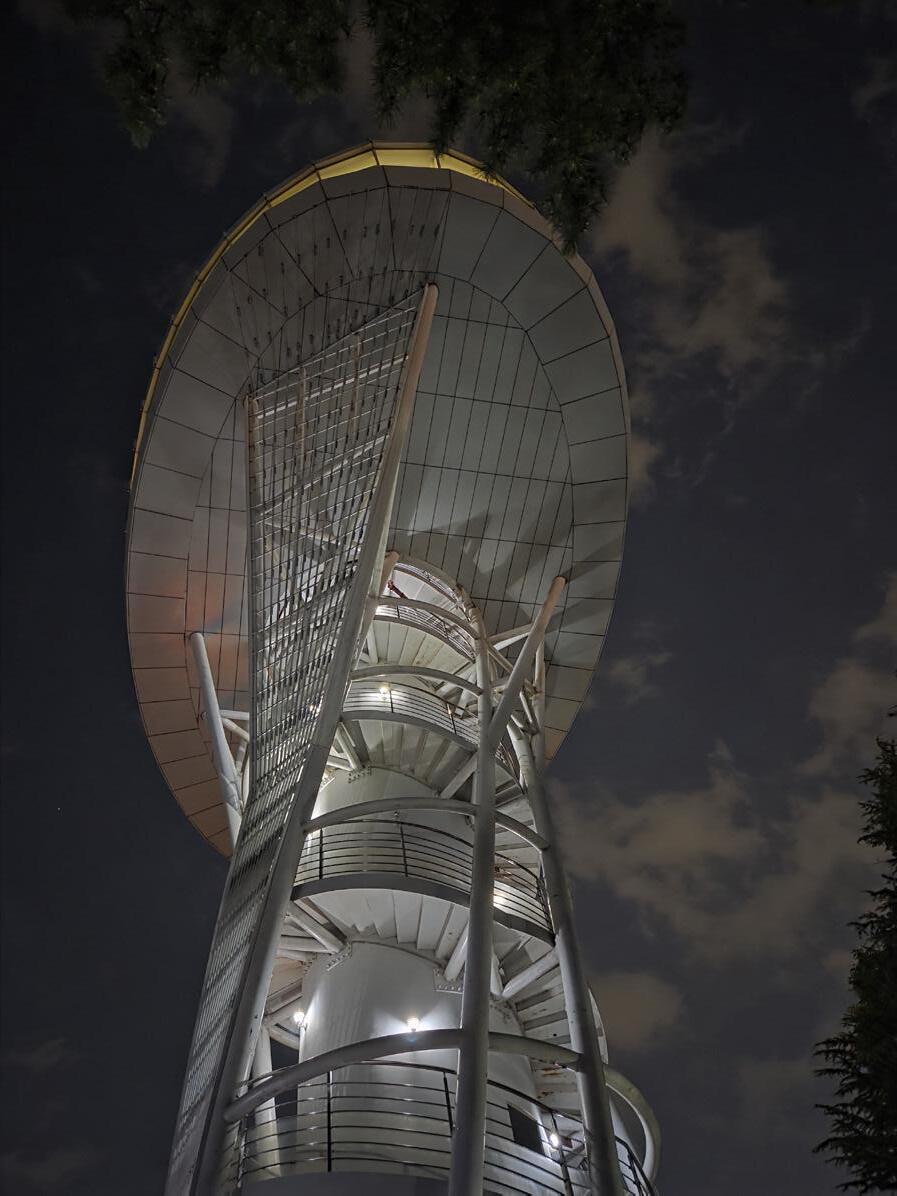

Scan the QR code for the Naver Map Location: Sajik Tower night view and tunnel lights.

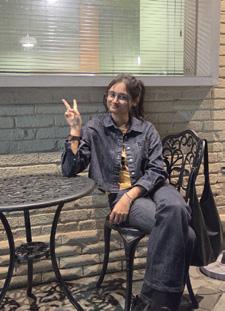
Dhivyaa is drawn to Korea’s café culture, often finding comfort in quiet corners where she can reflect, observe, or simply get lost in her research over a warm drink.
Photographs by Dhivyaa S. P.
By Saqib Sharif

Tucked away in the tranquil outskirts of Damyang, Jeollanam-do, a region famous for its bamboo forests and scenic metasequoia road, stands a hidden gem that blends modern design with rural charm: Café The Haru (카페 더하루). What first appears to be just another countryside café quickly reveals itself as a vast, sensory retreat where art, light, and nature flow together in perfect harmony. This is not just a café; it’s an experience.
The first thing you notice about Café The Haru is its incredible sense of space.
A sleek, modern building rises amid open fields, surrounded by manicured gardens, flowerbeds, and a wide parking area. The outdoor stone path leads to a cozy terrace where visitors sip coffee under the sunlight while enjoying the gentle breeze.
In autumn, the gardens bloom in soft pink flowers, creating postcard-perfect scenes against the backdrop of yellow rice paddies and blue skies. Every corner outside seems made for photos, from the reflective pools to the sculptural benches and pastel décor.
Step further in and you’ll find what makes The Haru truly unique: a large indoor aquarium set right at the heart of the café. Colorful tropical fish glide gracefully through crystal-clear water, reflecting soft beams from above. Families and couples alike are drawn to this aquatic centerpiece, and if you happen to visit at feeding time, it becomes a mesmerizing display of movement and color.
Above, the ceiling is alive with moving kinetic lights, hundreds of small fixtures that shift and glow in rhythm, creating a dream-like ambience.
The lights are not merely decoration; they move subtly, simulating ripples of sunlight underwater, blending perfectly with the nearby aquarium.
At certain times of the day, a mini light show synchronizes with gentle background music, transforming the café into a soft symphony of sight and sound. It’s part art installation, part relaxation therapy – a sensory treat few cafés can offer.
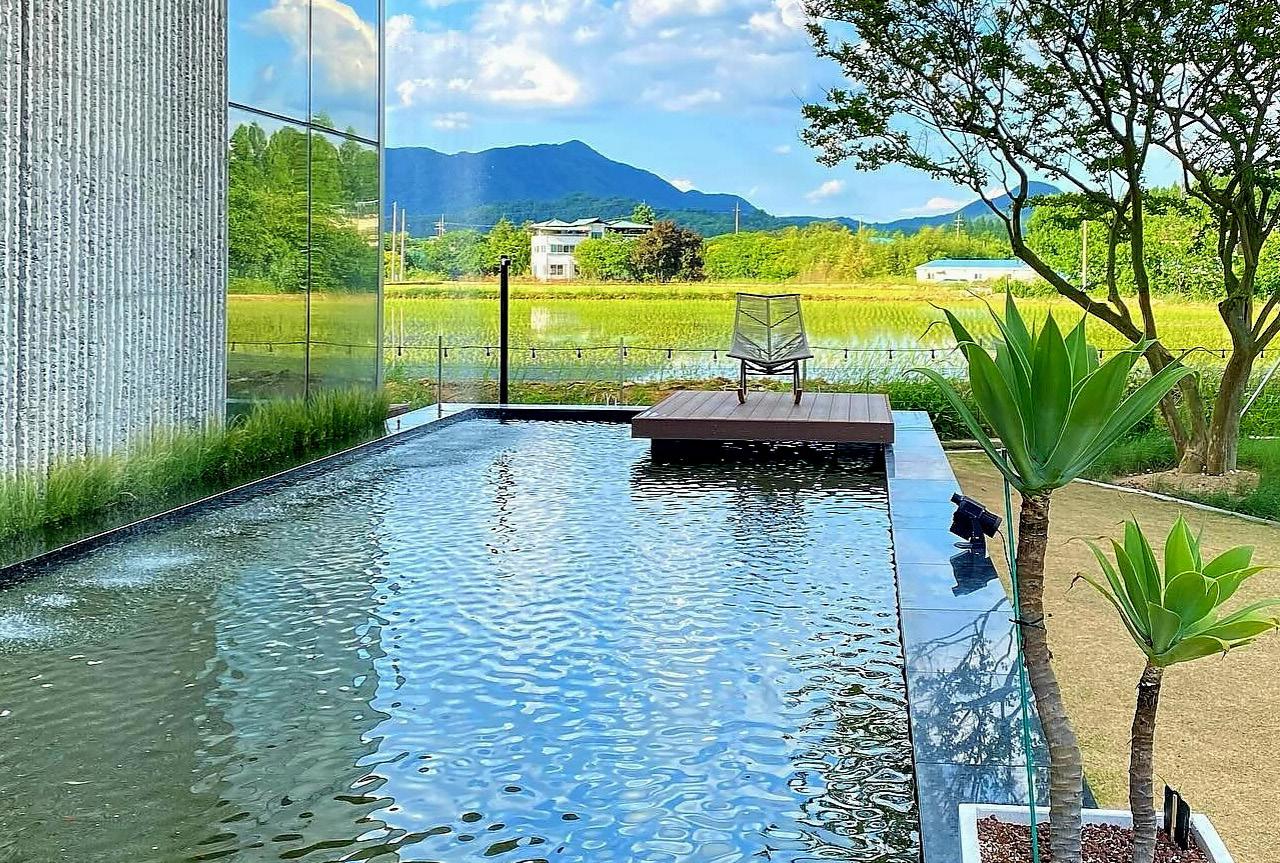
Outdoors, The Haru extends its beauty with shallow pools and terraces that shimmer in the sunlight. The reflections of clouds, architecture, and flowers across the still water create endlessly photogenic moments. Visitors often linger by the pool’s edge, capturing mirror-like photos of themselves framed by nature and modern design. At sunset, the light turns golden, casting warm tones over the pink muhly grass and the distant rice paddies, a breathtaking contrast that feels almost cinematic.
Surrounding the café is the calm embrace of the countryside, wide rice fields and quiet village roads that stretch as far as the eye can see. The sound of chirping birds and rustling leaves replaces city noise, letting every visitor truly unwind. Whether you walk a few minutes down the dirt path or just watch from the terrace, it feels like time slows down.
Café The Haru isn’t just about coffee, though the aroma of freshly brewed espresso drifts warmly through the air. It’s about capturing a moment of peace, surrounded by beauty in every direction. The gentle movement of fish, the shifting patterns of light, the sound of water, and the vast horizon of rice fields all blend to create a rare kind of stillness that stays with you long after you leave.
If you’re traveling through Damyang or Gwangju and looking for a spot that offers both inspiration and rest, Café The Haru is worth the detour. Go for the coffee, stay for the calm, and take home a memory that feels as vivid and alive as the day itself.

Best Time to Visit
Late morning to late afternoon for the best light and calm atmosphere. Light Show
Ask staff about the kinetic light schedule. It runs only at specific times.
Best Photo Spots
Outdoor pool reflections and the flower garden. Getting There
Located in Damyang-gun, about 40 minutes from Gwangju’s city center. Parking is free and spacious.
Web Sources
Dining Code. (n.d.). Retrieved October 2025 from https://www.diningcode.com/profile.php?rid= 1YCLTPF5FcY6&utm
likeaflower (n.d.). Café The Haru. Trip.com. Retrieved October 2025 from https://www.trip.com/moments/ detail/damyang-1595417-129350972

Saqib Sharif is a robotics engineer with a PhD in mechanical engineering, specializing in the design of smart healthcare devices and microrobots. With a strong background in medical technology and innovation, he is passionate about creating solutions that enhance smart healthcare. Dr. Sharif has been living in Gwangju for the past ten years. Currently, he serves as a senior researcher at Shinsung Tech Pvt. Ltd., Gwangju.
By Maryam Ali
Ifirst visited the Nampyeong Buyeong Meat Restaurant for a teachers’ dinner (hoesik) earlier this year. The restaurant was booked for our private party, and we were able to sample the dishes while enjoying a communal chat. I remember being surprised by the excellent flavors of the foods we were served.
Occasionally, there is a queue when the restaurant reopens at 5 p.m. for dinner. After entering, you are likely to be seated in a booth and given the menu straight away. Make sure you come early to avoid the line! The interior of the building accommodates the fast-paced aspect of the restaurant. If you are there for an occasion, you can book private rooms. You can book a room through Naver, but it cannot be booked on the same day as the reservation. The rooms can accommodate 4 to 40 people. The staff are friendly, and the service is accommodating, with a quick turnaround of people. The place is popular with locals and is a great find! The menu is written in Korean, and there is no English option, so make sure to bring your Papago translator if you need it.
The restaurant offers a range of prices. You can choose from many options for a great budget meal, like the bibimbap (12,000 won), as well as high-end meals like meats and barbecue. The most expensive meal in the store is a 100,000won beef dish.
After the main meal is ordered, the side dishes are served. The side dishes at the restaurant are flavorful. Some of my favorites were the salty anchovies and peanuts (myeolchi-ttangkongbokkeum) and the kimchi.
Following the wait, you get the main meal and the seaweed soup (miyeok-guk). I adore the seaweed soup because of how warm the dish is. My go-to
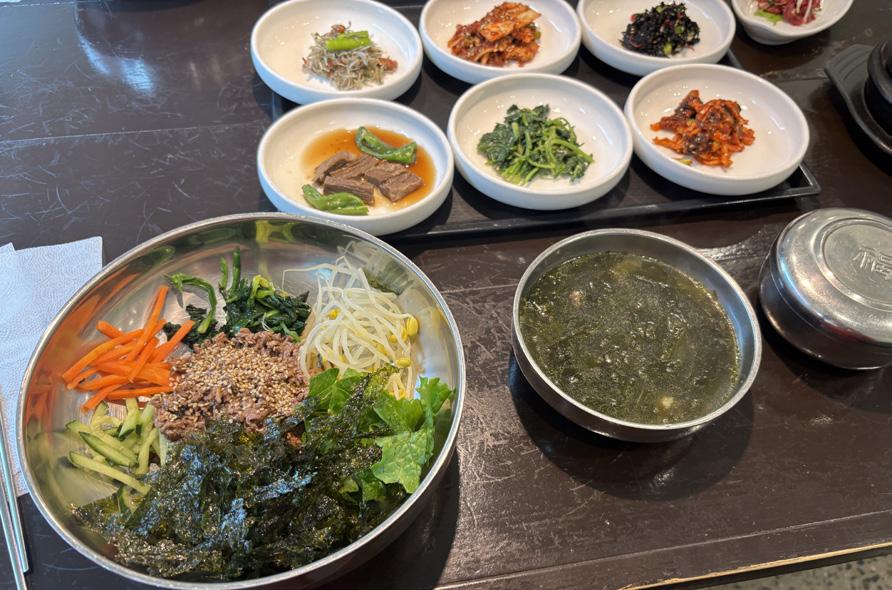
order is the cooked bibimbap (yukhoe bibimbap), which is always accompanied by a soup.
If you’re looking for high-quality Korean food, I highly recommend this restaurant. I have referred many of my friends to it. This restaurant was where I had my final meal in Gwangju before my recent departure, which shows how much I cherish the offerings on their menu. You won’t regret seeking out the Nampyeong Buyeong Meat Restaurant to have a taste!

Nampyeong Buyeong Meat Restaurant
Open: 11:30–14:00, 17:00–21:30 (Closed Sundays)
Address: 215 Gyeongyang-ro (Gyerim-dong) Dong-gu, Gwangju Phone: 0507-1379-5658
The Author

Maryam Ali is currently based in Sheffield and is persuing an MA in broadcast journalism at the University of Sheffield. Originally from London, she took the plunge to live abroad and share her experiences in a blog. Blog: https://sites.google.com/view/ maryamaliportfolio/
Photograph by Maryam Ali.
By Zhang Jiuzhou (Julius)
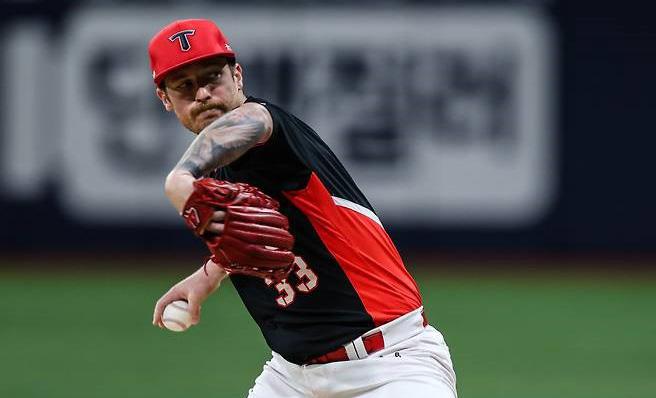
After failing to finish inside the top five this season, the Kia Tigers – last year’s KBO champions – wrapped up their 2025 campaign in eighth place. As the dust settles, attention has naturally turned to the futures of their foreign players and whether they will return next year.
Reflecting on his first KBO season, Adam Oller said his most memorable moment came on September 6 against the NC Dinos in Changwon, when he recorded his tenth win of the year. “In my entire professional career, I had never reached 10 wins with one team,” Oller recalled. “That game was really special to me.” He added that his time
in Korea has been refreshing: “Playing baseball here has been fun. Even when I first signed with Kia, I didn’t expect to go back to the major leagues. The pressure to keep climbing in the U.S. was intense. Right now, I just want to focus on what I can control and enjoy the game.”
From a performance standpoint, Oller gave the Tigers little reason for hesitation. However, he remains realistic about his future: “Of course, I don’t know where I’ll be next year,” he admitted. “But my time with Kia has meant a lot. Whether or not I return, I’m grateful for the opportunity.”
Kia’s ace James Naile appears set to part ways with the club after two successful seasons. Following
the team’s final game, he gifted his interpreter a signed jersey reading “Thank you for everything over the past two years.”
Rumors have already emerged that Naile plans to pursue another shot at the major leagues. Naile was the cornerstone of Kia’s title run last year, going 12–5 with a 2.53 ERA in 26 starts. His precise control and deceptive breaking pitches dominated hitters across the league. Despite suffering a fractured jaw late in the season, he returned for the Korean Series and help the Tigers lift the trophy.
This year’s farewell, however, seems definitive. Naile is expected to test the U.S. market once again, seeking a major league return after proving himself as one of the KBO’s most consistent foreign pitchers.
Wisdom’s Power Can’t Mask His Flaws Manager Lee Bum-ho set an ambitious goal for Patrick Wisdom before the season: “We’re counting on him for 30 homeruns,” Lee said.
With 88 MLB homeruns under his belt, Wisdom joined Kia as a power-hitting right-handed slugger meant to fill the void left by former import Socrates Brito, who had provided balance in both offense and defense over three seasons. The Tigers hoped Wisdom’s arrival would push them toward a second consecutive Korean Series title. But as the season progressed, debate over his future never ceased – and by the end of the year, re-signing him appeared unlikely.
In 119 appearances, Wisdom hit .236 with 35 home runs and 85 RBIs, posting an .856 OPS. Statistically, his power output ranks among the best by a foreign hitter in Kia’s history. Considering he missed games due to two separate back injuries, his homerun total remains impressive –well above the 30 that Lee envisioned.
Yet, the flaws were hard to ignore. Wisdom’s overall batting average hovered in the low
.230s, repeatedly failing in clutch moments. By midseason, his on-base percentage had dropped to .318, and defensive inconsistency only compounded matters. Frequently shuffling between first and third base, Wisdom struggled to find stability.
Meanwhile, Oh Seon-woo – a promising young hitter – emerged as a potential replacement, albeit with defensive limitations of his own. Lee Bum-ho believes first base suits Oh best, given his youth and range. With the team now short on outfielders following midseason trades, analysts predict Kia will likely seek an import outfielder rather than re-signing Wisdom.
Even so, whenever Wisdom stepped up to the plate, anticipation filled the air. His raw power remained undeniable – a reminder that sluggers like him don’t come easily. Still, with low batting averages and inconsistent production in key situations, the question looms: Is a 35-homer hitter worth keeping if he rarely delivers when it matters most?
As Kia looks to rebound from a disappointing season, the futures of its foreign trio symbolize the crossroads the franchise now faces. Oller rediscovered his joy for the game, Naile may be ready for one last shot at the majors, and Wisdom’s raw power leaves both promise and frustration in its wake. Whether any of them return, their impact on Kia’s clubhouse and fanbase this year has been undeniable – a reminder that even in a down season, every ending sets the stage for a new beginning.


The Author Zhang Jiuzhou (Julius) is from Harbin, China. He began writing in 2022 and has contributed to the Chinese media in Gwangju. He currently serves at a sports data company while pursuing a master’s degree in media and communications. He is also responsible for the Chinese Students Association at Chonnam National University..
By Zhang Jiuzhou (Julius)

The Kia Tigers’ 2025 KBO League campaign has come to a close with a disappointing record of 65 wins, 75 losses, and 4 draws, a .464 winning percentage that few could have predicted at the start of the season. Most experts had tipped the Tigers to dominate the league after their aggressive offseason signings.
Kia entered the year with high hopes, carefully preparing to recapture the form that had earned them unified championships in 2009 and 2017. The word “dynasty” was almost taboo inside the clubhouse, but management made clear that strong reinforcements were key to defending their title. Yet by season’s end, the Tigers had fallen even below their fifth-place finishes in 2010 and 2018.
Poor injury management, cracks in both the starting rotation and bullpen, and slumps from key pitchers Cho Sang-woo and Jung Hai-young all derailed their campaign. Offensively, the lineup cohesion seen last season never materialized, and defensive errors continued to plague the team. By June, the “Hampyeong Tigers” could climb no higher, eventually sliding to eighth place.
The club now faces a crucial offseason. With several key free agents expected to depart, Kia must prepare as if replacing them all. As one insider admitted, “This year, we painfully realized that the word ‘dynasty’ should never be taken lightly.” Manager Lee Bum-ho repeatedly apologized to fans and urged his players to use the winter to reflect calmly on their shortcomings.
Franchise legend Yang Hyeon-jong finished the season with a 5.00 ERA – his worst since 2012. Despite surpassing 150 innings and 100 strikeouts for the 11th consecutive year, Yang’s form has visibly declined. Over 30 starts and 153 innings, he went 7–9 with an opponent batting average of .312 and a 1.52 WHIP.
Yang, now eligible for free agency once again, faces an uncertain future. Will Kia retain their long-time ace for symbolic reasons, or move on in pursuit of a new generation?

Asthe 2025 K League 1 season nears its conclusion, the Gwangju Metropolitan Government has confirmed it will extend its financial support package for Gwangju FC over the next three years.
The revised ordinance includes approximately 11 billion won in next year’s city budget – a 10% increase from the previous year. Founded in 2010 as a citizen-owned club, Gwangju FC has relied heavily on municipal funding since its inception. The club faced financial collapse within three years of formation, resorting to debt financing and even delaying player salaries in 2016. To stay afloat, it frequently sold promising players to wealthier teams.
Although city subsidies increased to 10 billion won in 2020, spending inefficiencies persisted. The K League even sanctioned the club for breaching financial soundness regulations. Talks of privatizing or selling the club have surfaced repeatedly, but with no buyers in sight, the idea has always fallen through.
Observers note that Gwangju FC’s struggles epitomize the sustainability challenges facing Korea’s citizen clubs. Despite being branded as “community-owned,” such teams remain financially dependent on local governments. With Gwangju FC recently securing a spot in the Korea Cup final, the city’s continued backing could prove vital – both for their competitive future and their financial survival.
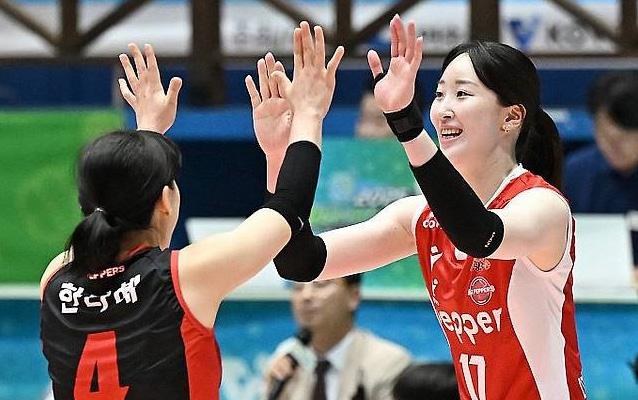
Ye-rim
The AI Peppers’ KOVO Cup drought continues, as the team failed to record a single win once again in the 2025 Yeosu NH Cup. On September 25, the Peppers fell to Hyundai E&C 2–3 (25–22, 20–25, 19–25, 25–21, 11–15), marking their 12th
consecutive KOVO Cup loss since the club’s founding. The Peppers also lost to GS Caltex and Heungkuk Life, but managed to take two matches to five sets – a small sign of progress.
Last V-League season, the Peppers finished 11–25 (35 points), last in the standings for the fourth straight year. Still, the gap with sixth-place GS Caltex was just four points, signaling a gradual rise under Head Coach Chang So-yun. Their goal this season: to finally climb out of last place for the first time in team history.
To address their weakest area – reception – the club signed veteran Go Ye-rim in free agency for 370 million won. Though her scoring output has declined (169 points over the past two seasons), her reliable serve-receive and wealth of experience are expected to stabilize the young roster.
Team captain Park Jeong-ah remains central to the Peppers’ hopes after scoring 468 and 484 points in her two seasons with the club. However, her 12.84% and 13.47% reception efficiency remain far below league averages for an outside hitter. Unless she can overcome her receiving struggles, opponents will continue targeting her with aggressive serves.
The arrivals of foreign players Zoe Weatherington and Shimamura Haruyo, a two-time Olympian from Japan, could mark a turning point. If the pair adapt quickly, the AI Peppers may finally have the balance and resilience needed to shed their long-standing reputation as the league’s underdogs.


Zhang Jiuzhou (Julius) is from Harbin, China. He began writing in 2022 and has contributed to the Chinese media in Gwangju. He currently serves at a sports data company while pursuing a master’s degree in media and communications. He is also responsible for the Chinese Students Association at Chonnam National University.
Korean Modern & Contemporary
Art Project #1
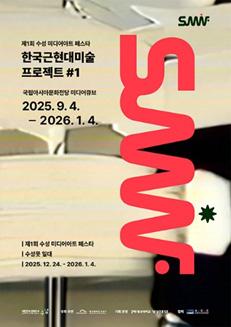
Dates: September 4 – January 4, 2026
Time: 5:00 p.m. – 6:00 p.m.
Venue: Asia Culture Center, Media Cube
Admission: Free; All ages admitted
Reservations: No booking required
Inquiries: 1899-5566
Kim Han-yong Archive Photo
Exhibition: “Records of Dreams”

Dates: September 15 – March 15, 2026
Time: 10:00 a.m. – 6:00 p.m. (Tue.–Sun.) / 10:00 a.m. – 8:00 p.m. (Wed. & Sat.). Closed Mondays.
Venue: Asia Culture Center, Asia Culture Museum, Special Exhibition Hall 2
Admission: Free; All ages admitted
Reservations: No booking required Inquiries: 1899-5566
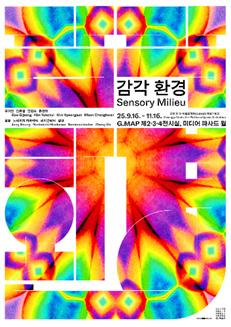
Dates: September 16 –November 16 (Closed Mondays)
Time: 10:00 a.m. – 6:00 p.m.
Venue: G.MAP, Exhibition Hall 2–4 & Media Facade Wall
Admission: Free
Reservations: No booking required
Inquiries: 062-613-6124

Dates: June 27 – March 1, 2026 (Closed Mondays)
Time: 10:00 a.m. – 6:00 p.m.
Venue: Gwangju Museum of Art, Children’s Gallery (Main Hall)
Admission: Free; All ages admitted
Reservations: No booking required
Inquiries: 062-613-7100

Dates: September 5 –November 13
Time: 10:00 a.m. – 6:00 p.m.
Venue: Yangnim-dong Penguin Village Craft Street
Admission: Free; All ages admitted
Reservations: No booking required
Inquiries: 062-682-0976
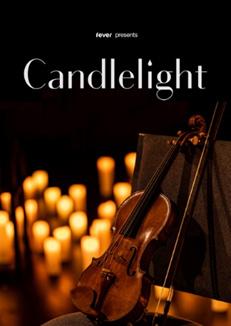
Dates: November 29 (Fri.) / December 20–21 (Sat.–Sun.)
Time: 4:00 p.m. / 7:30 p.m.
Duration: 65 min.
Venue: Asia Culture Center, Theater 2
Ticket Prices: A Class 55,000 won; B Class 44,000 won; C Class 33,500 won
Admission: Must be 10 or older (under 16 must be accompanied by a guardian)
Reservations: Fever homepage (www.feverup. com)
Inquiries: 080-352-8774
The ACC’s 10th Anniversary Special Performance: Trilateral Asian Co-Production “Remapping ASIA”
Korean, Taiwanese, and Thai directors explore Asia’s Connected Diversity
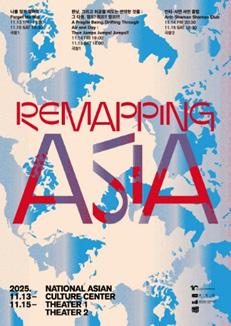
Dates: November 13–15 (Thu.–Sat.)
Venue: Asia Culture Center, Theaters 1 & 2 (varies by performance)
Admission: Must be 13 or older (those born in 2012 or earlier)
Ticket Prices: 20,000 won per show; 3-show series package: 30,000 won
Reservations: Asia Culture Center Foundation website, Ticket office, Call center
Inquiries: 1899-5566
Forget Me Not
Date: November 13 (Thu.) 7:30 p.m. / November 15 (Sat.) 4:30 p.m.
Venue: Asia Culture Center, Theater 1
A Fragile Being, Drifting Through Air and Day: Then Jumps, Jumps! Jumps!!
Date: November 14 (Fri.) 7:00 p.m. / November 15 (Sat.) 2:00 p.m.
Venue: Asia Culture Center, Theater 1
Anti-Shaman Shaman Club
Date: November 14 (Fri.), 8:30 p.m. / November 15 (Sat.), 6:30 p.m.
Venue: Asia Culture Center, Theater 2

Dates: November 7 (Fri.)
Time: 7:30 p.m.
Duration: 150 min. (including 2 intermissions)
Venue: Asia Culture Center, Theater 2
Ticket Prices: R Class 50,000 won; S Class 30,000
Admission: Must be 7 or older (those born in 2018 or earlier)
Reservations: Asia Culture Center Foundation website, Ticket office, Call center Inquiries: 1899-5566
*Gary Hoffman Cello Recital features a full recital of Beethoven’s complete cello sonatas. Running time is subject to change depending on performance conditions.
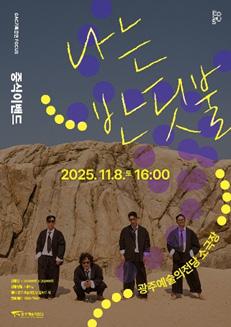
Date: November 8 (Sat.)
Time: 4:00 p.m.
Duration: 90 min.
Venue: Gwangju Culture and Arts Center, Small Theater
Ticket Prices: R Class 30,000 won; S Class 20,000
Admission: Elementary school students and older
Reservations: Gwangju Culture and Arts Center website, TicketLink (1588-7890)
Inquiries: 062-613-8233
Gwangju Symphony Orchestra Chamber Series VII “Pastorale”

Date: November 6 (Thu.)
Time: 7:30 p.m.
Duration: 90 min. (including intermission)
Venue: Gwangju Culture and Arts Center, Small Theater
Ticket Prices: All seats 10,000 won
Admission: Elementary school students and older
Reservations: Gwangju Culture and Arts Center website, TicketLink (1588-7890)
Inquiries: 062-613-8241
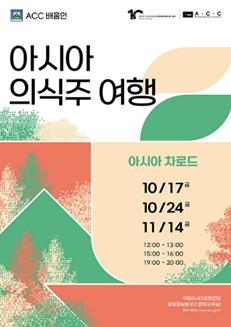
Dates: November 14 (Fri.)
Time: 12:00–1:00 p.m. / 3:00–4:00 p.m. / 7:00–8:00 p.m.
Venue: Asia Culture Center, Archive & Research, B2, Asia Culture Academy 1
Admission: Free; Adults only
Reservations: Asia Culture Center Foundation website
Inquiries: 1899-5566, 062-601-4326
*One application per person. You may participate in the same program only once.

Dates: November 2–23
Time: Sessions 1–3: 10:30 a.m. – 12:00 p.m. / Session 4: 10:30 a.m. – 12:30 p.m.
Venue: Asia Culture Center, Children Play Culture
Ticket Prices: 60,000 won
Admission: Grades 3 & 4 (elementary school)
Reservations: Asia Culture Center Foundation website
Inquiries: 1899-5566

Dates: Every Saturday until November 29
Time: 1:00–5:00 p.m.
Venue: Yangnim Village Art Travel Center
Reservations: No booking required
Inquiries: 0507-1344-4406
Compiled by Charlene Lee.

Charlene Lee is the founder of Charlene English Institute. Having lived in many different countries, she loves to explore and experience diverse cultures. She hopes to contribute to making Gwangju a more vibrant city.
Gwangju & South Jeol/a International Magazine
The Gwangju News is looking to expand its cadre of volunteer writers for articles in the following areas:
FEATUREARTICLES
Currenttopics,comingevents, recentlyheldevents
TRAVEL & DISCOVERY
PlacestogoinGwangju,one-day trips,travelelsewhereinKorea
COMMUNITY
Localprograms,projects, clubs,communityservice
KOREANA
Koreanhistory,traditional cultureandlifestyles, artifacts
THE ENVIRONMENT
Climatechange,clean energy, eco-parks, sustainabilityprojects
EDUCATION
Teachingandlearningofall types: languages, cooking, knitting, etc.

EXPAT LIVING
TipsonlivinginKorea: health, banking,insurance, housing,childcare
CREATIVEWRITING
Veryshortstories,poetry
Restaurants,coffeeshops, bakeries,confectioneries
SPORTS
Events,establishments, recreationalfaclities,sports figures
Exhibitions, performances, artists,galleries,museums
ENTERTAINMENT
Music,bands,amusement parks
